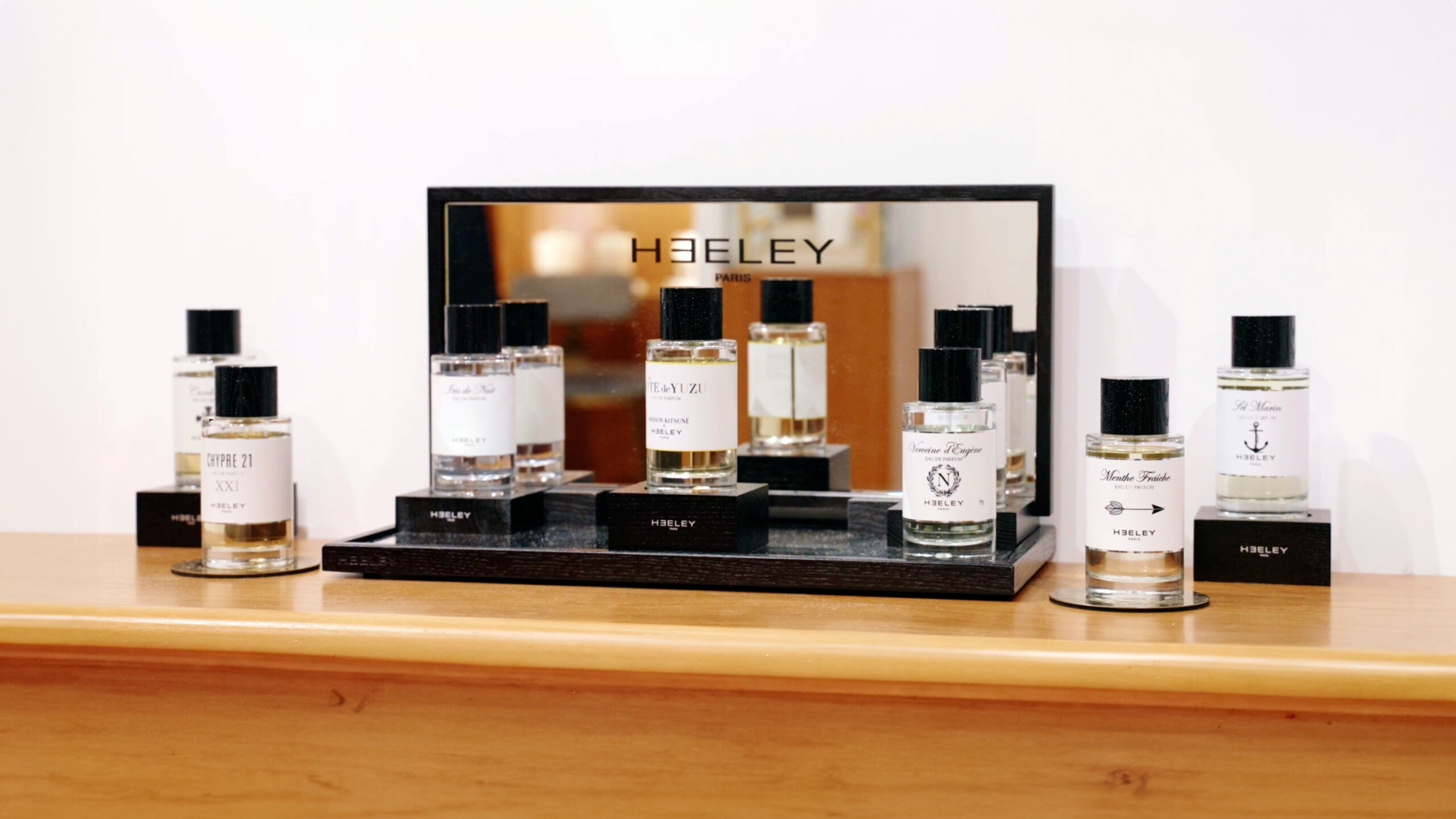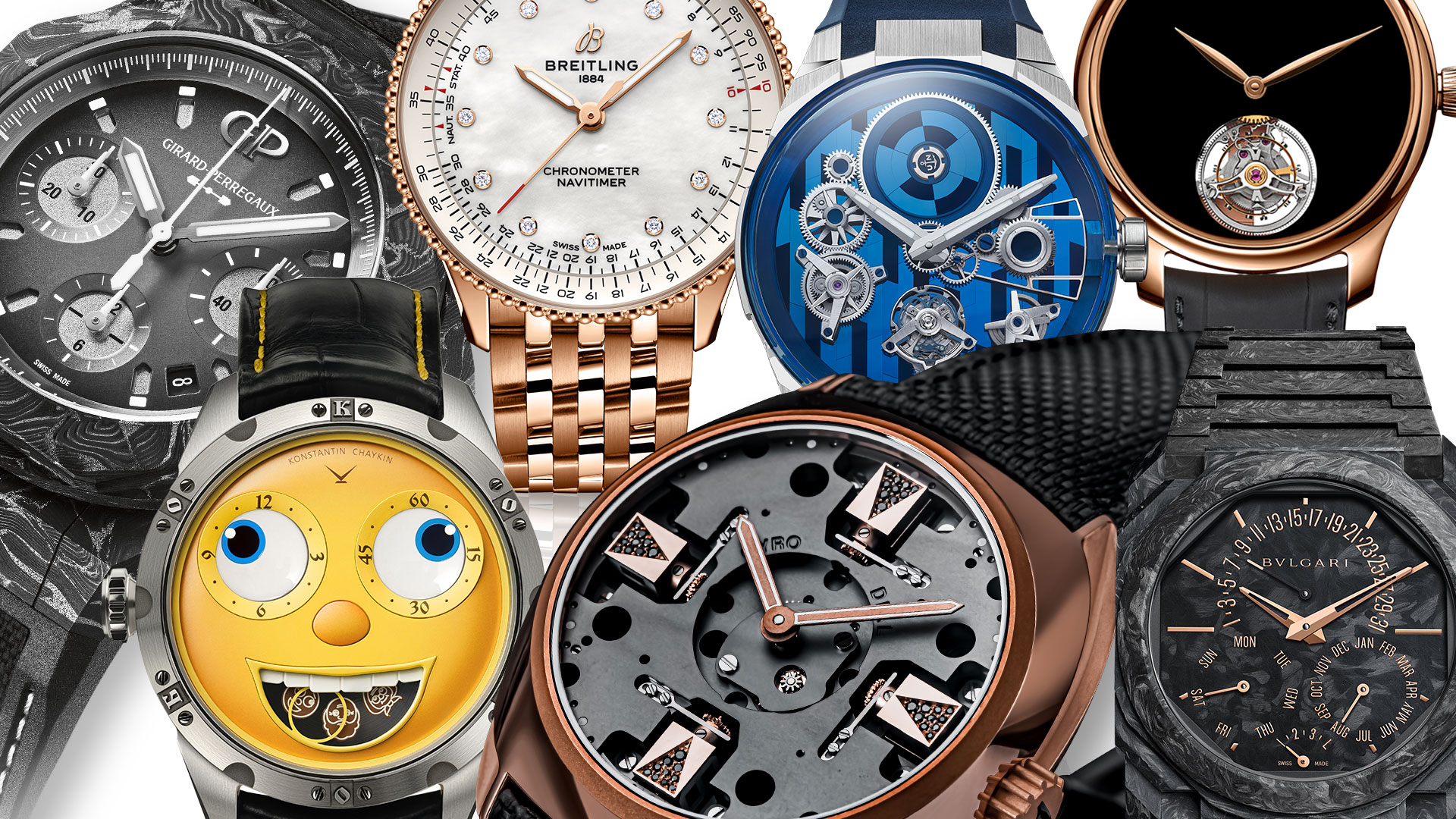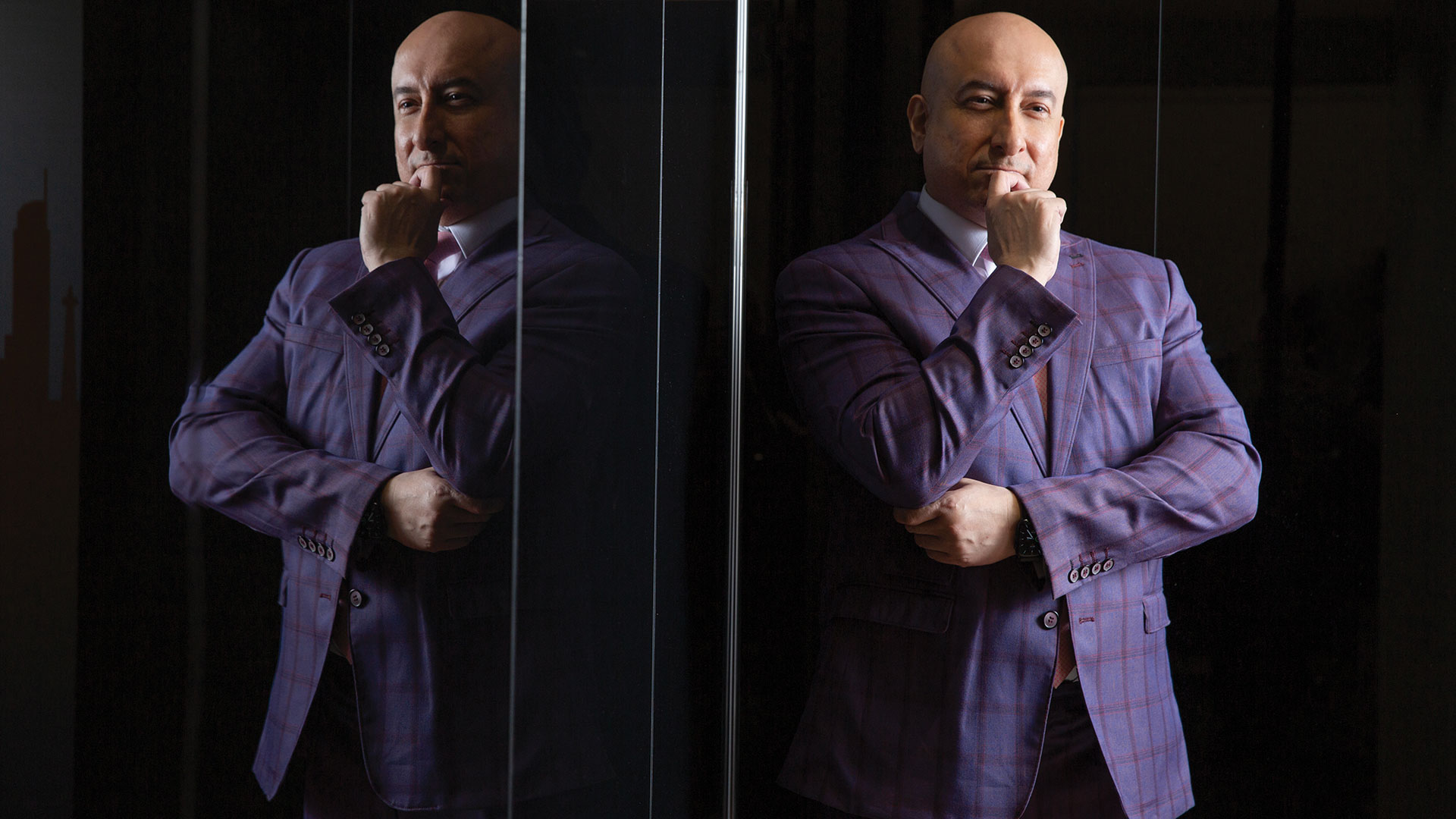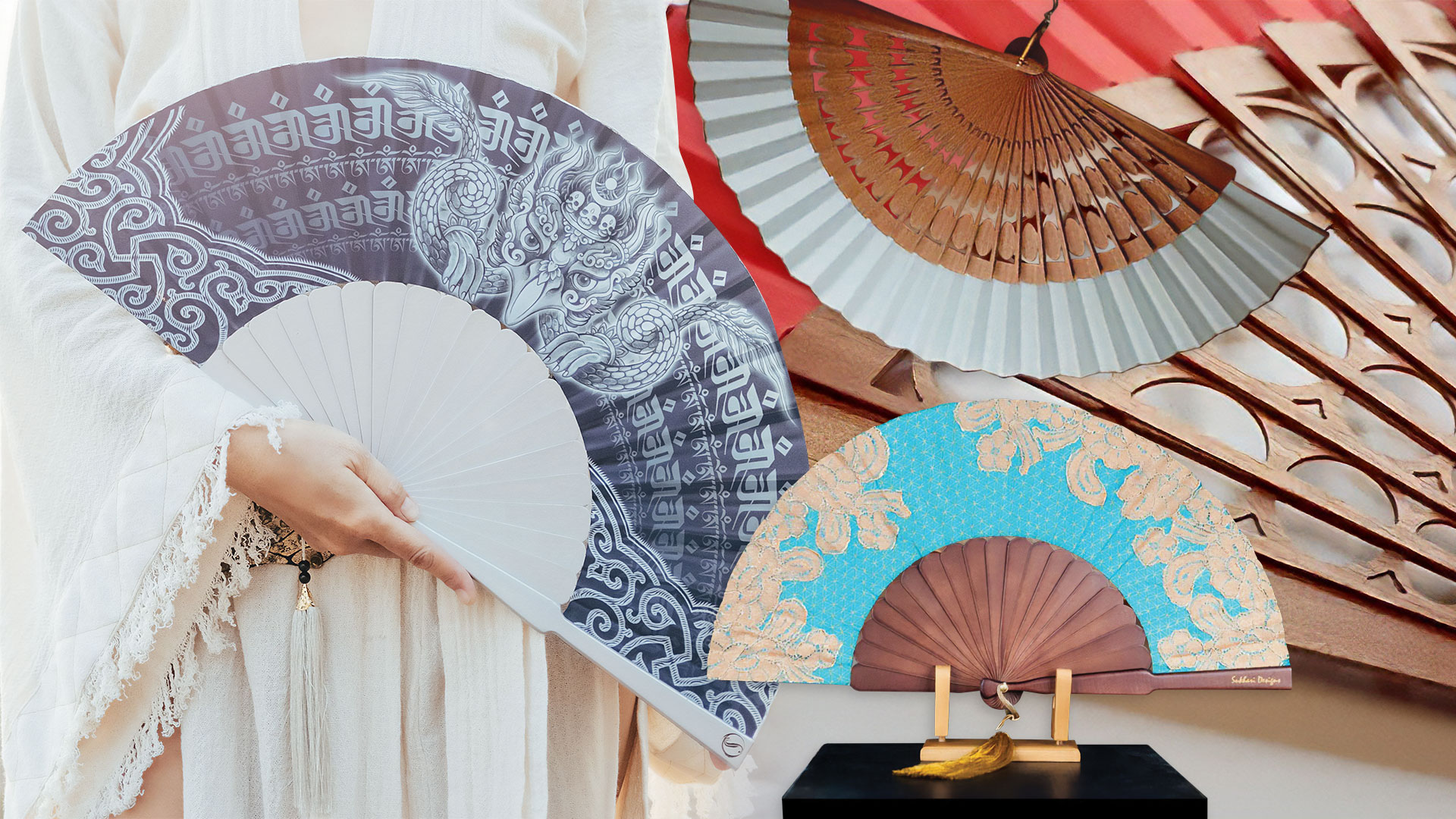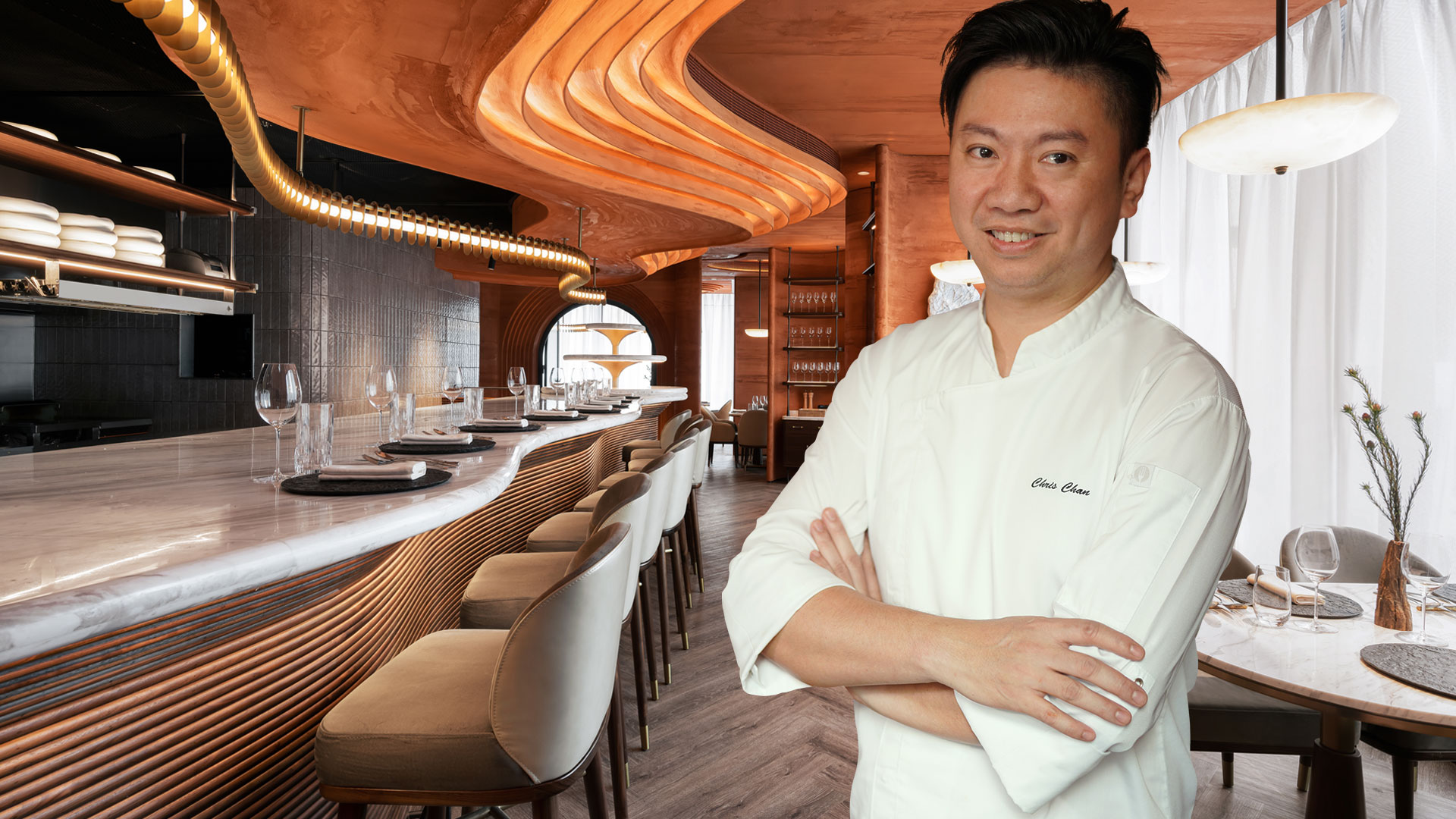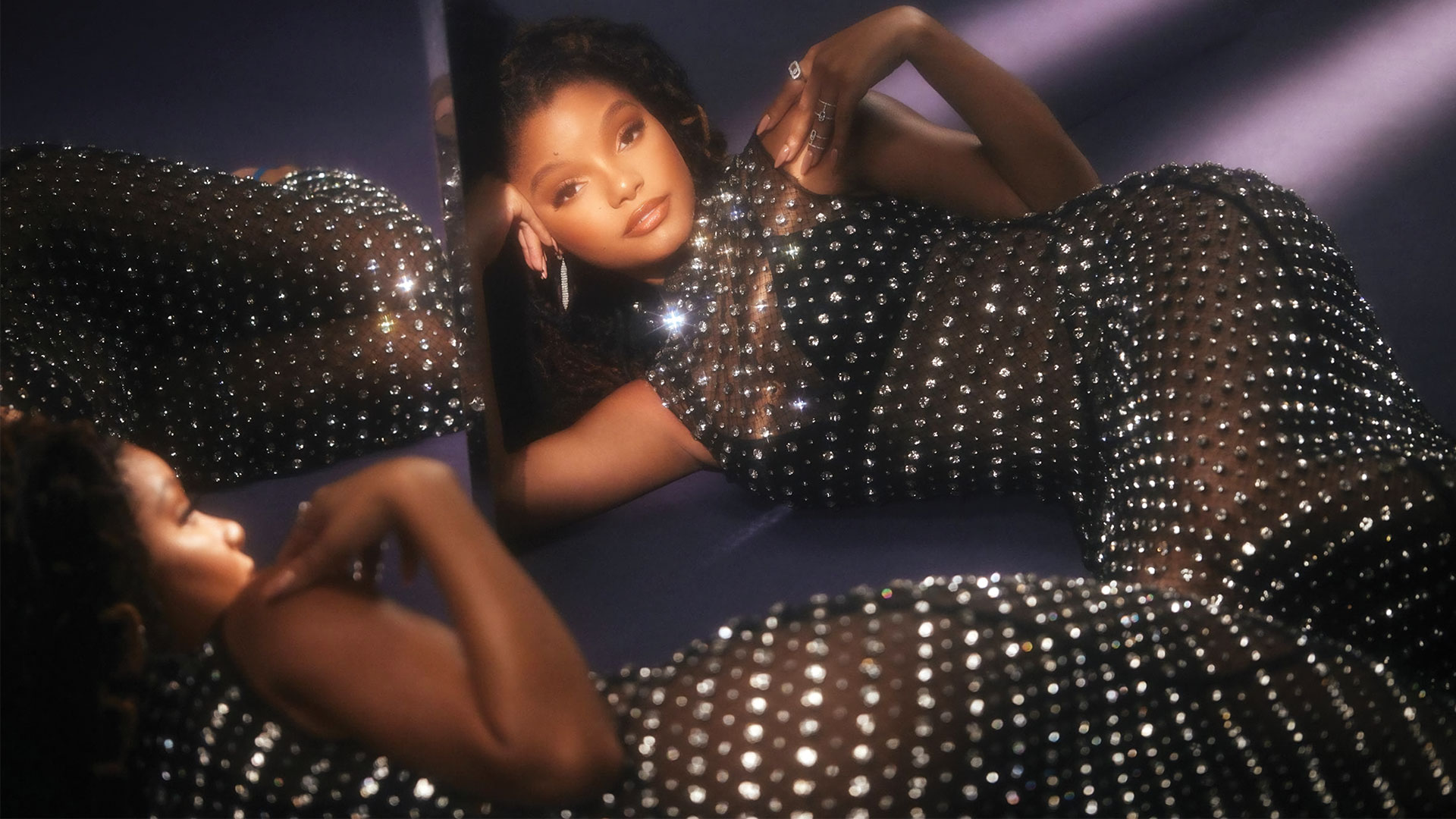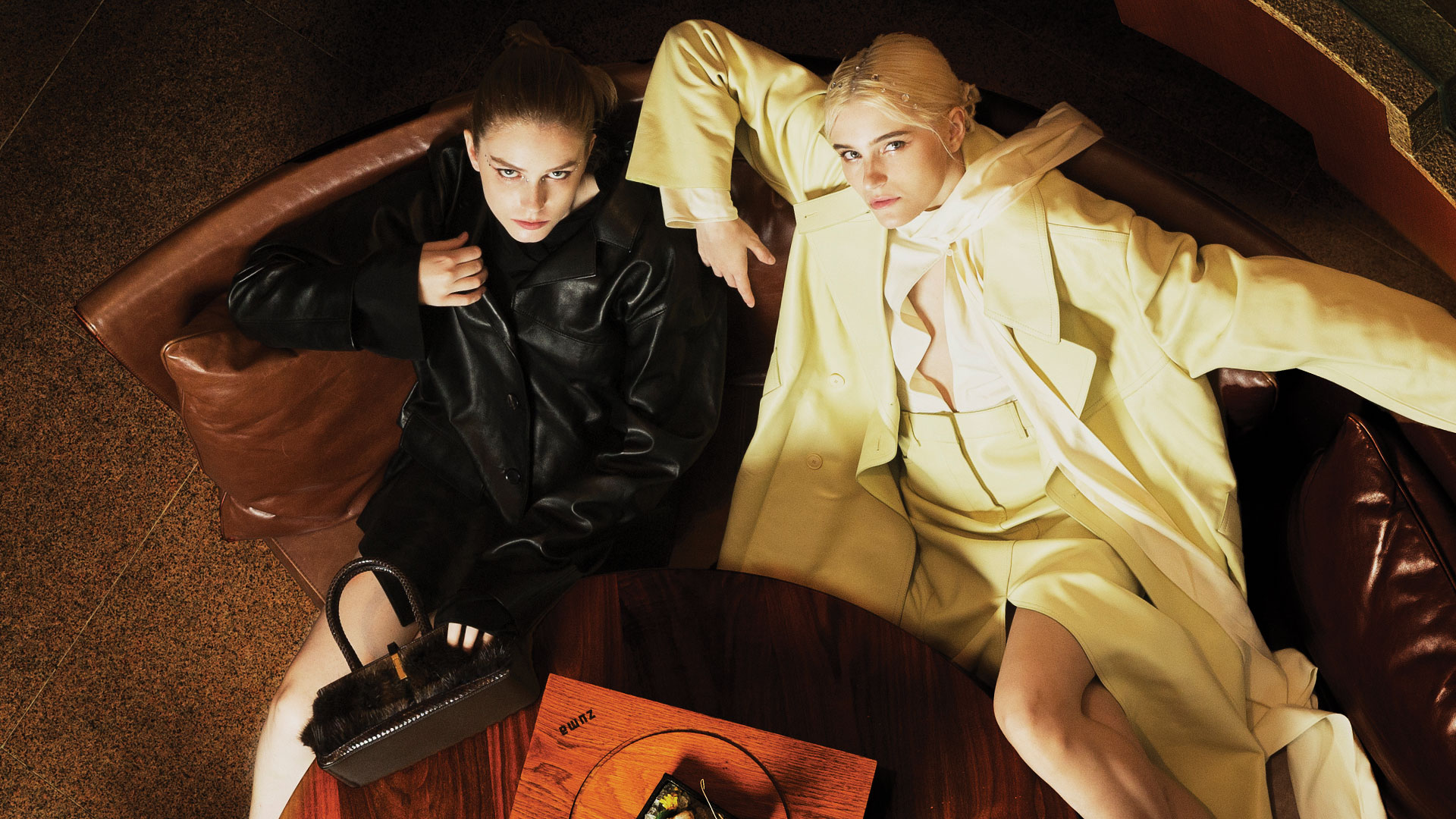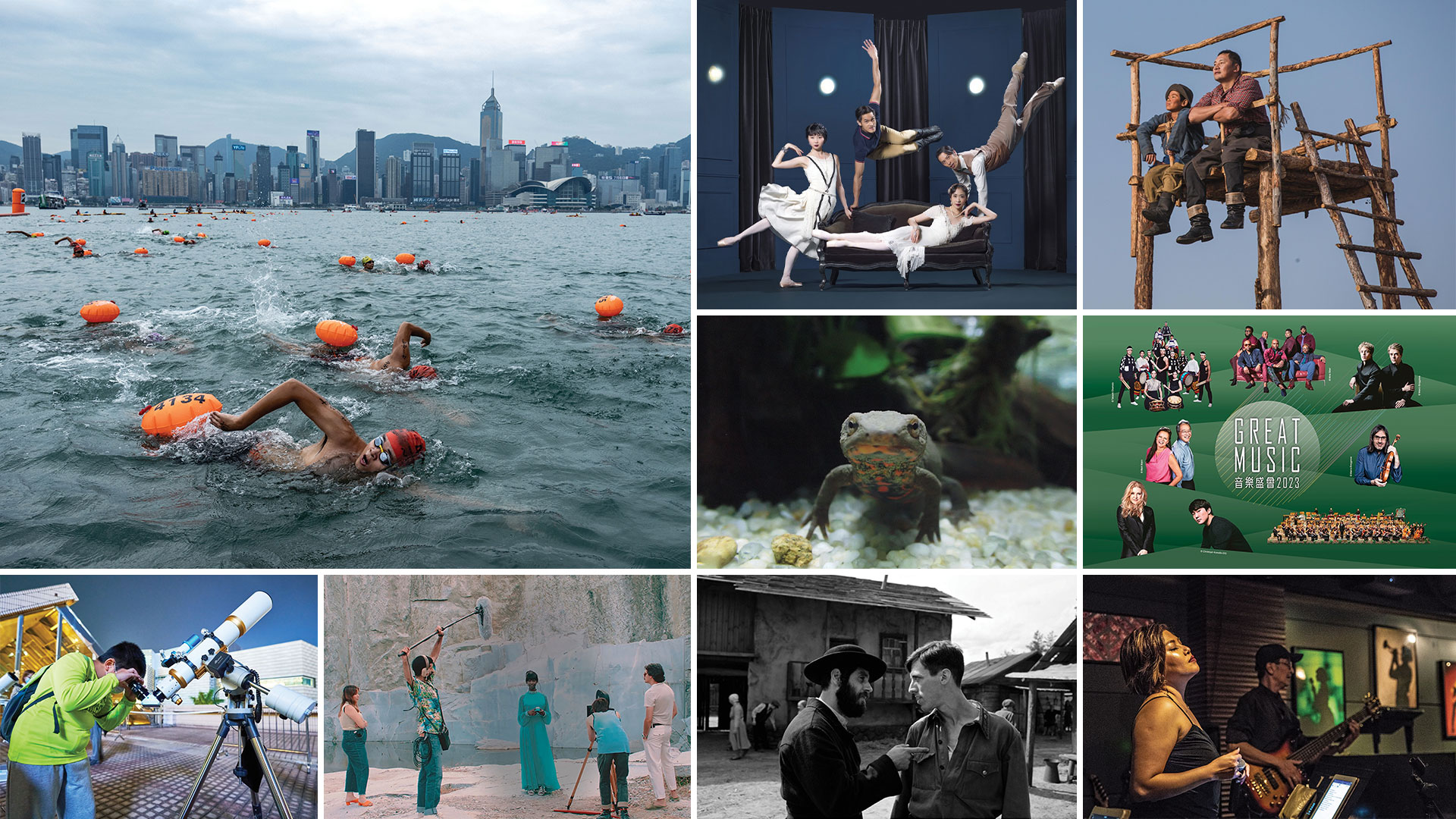James Heeley, the proud creator of Heeley Parfums, has a strong sense of what makes a good perfume and has an overriding passion for scents that are elegant and pleasurable – all can be purchased at Scented Niche.
Category: Latest
Swiss Precision: Geneva Watch Days allows Switzerland’s smaller names their day in the sun
Geneva Watch Days draws a plethora of independent manufactures to the city’s waterfront, where they shine alongside the bigger boys. The summer event acts as a platform for Swiss watchmaking and has been growing in stature since it was inaugurated in 2020 by eight prestigious brands. The number of participants has since mushroomed, and this year some 40 fine watchmakers took the opportunity to release new models or showcase their most eye-catching designs.
Take Breitling, which launched the new Navitimer 36 and 32 – two slender iterations, 36 mm and 32 mm respectively, to round out the Navitimer collection, and ideal for those who prefer a less weighty time machine on their wrists. Powered by the robust Breitling Calibre 17, the luxury models have mother-of-pearl dials studded with lab-grown diamonds and 18-carat red gold cases with cambered sapphire glass that is glare- proof on both sides. They can be worn with a seven- row traceable gold bracelet or an alligator leather strap. The 32mm version embraces the line’s first- ever powdery pink and light blue faces alongside the classic white. Using sustainable gold and diamonds vouches for the watchmaker’s integrity as well as its aesthetic credentials.
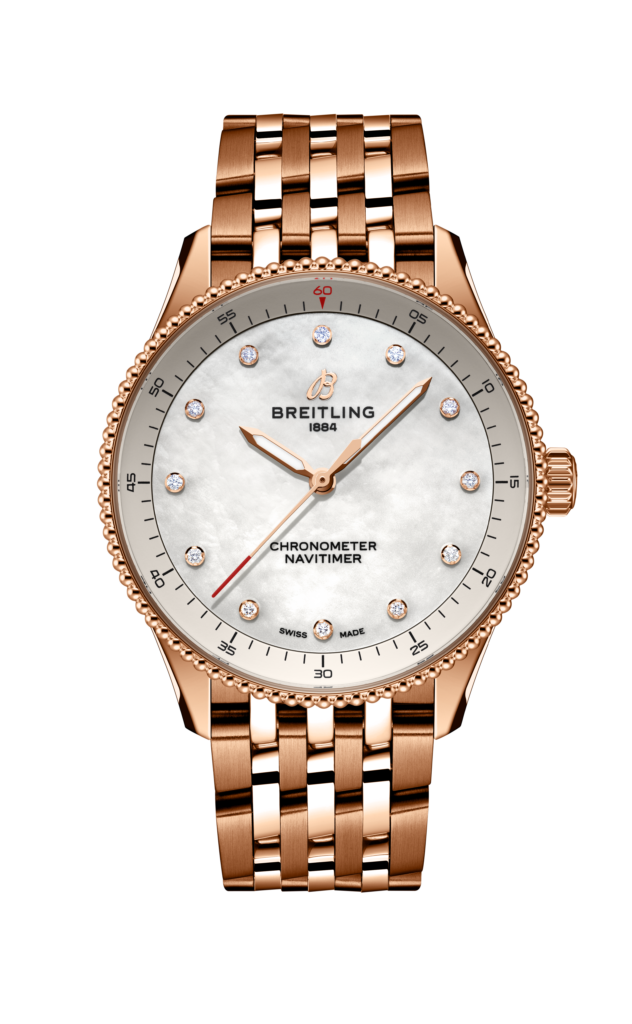
Bulgari’s watch collections combine Italian aesthetics with Swiss craftsmanship, as epitomised by novelties like the Octo Finissimo Carbon Gold Automatic and Octo Finissimo Carbon Gold Perpetual Calendar which were presented at the Geneva event. Their combination of anthracite high-tech carbon and pink gold makes them true standouts. At just 2.23 mm thick, the Automatic version sports the BVL 138 ultra-thin mechanical calibre movement, featuring a platinum miniature automatic disc with small seconds, a power reserve of 60 hours and waterproofing to a depth of 100 metres. Its forged carbon dial comes with gold-plated hands and hour makers. The more complex BVL 305 self-winding mechanical calibre of the Perpetual Calendar, meanwhile, is only slightly thicker at 2.75 mm and it likewise proudly shows a textured, anthracite carbon face with luxurious accents in rose gold.
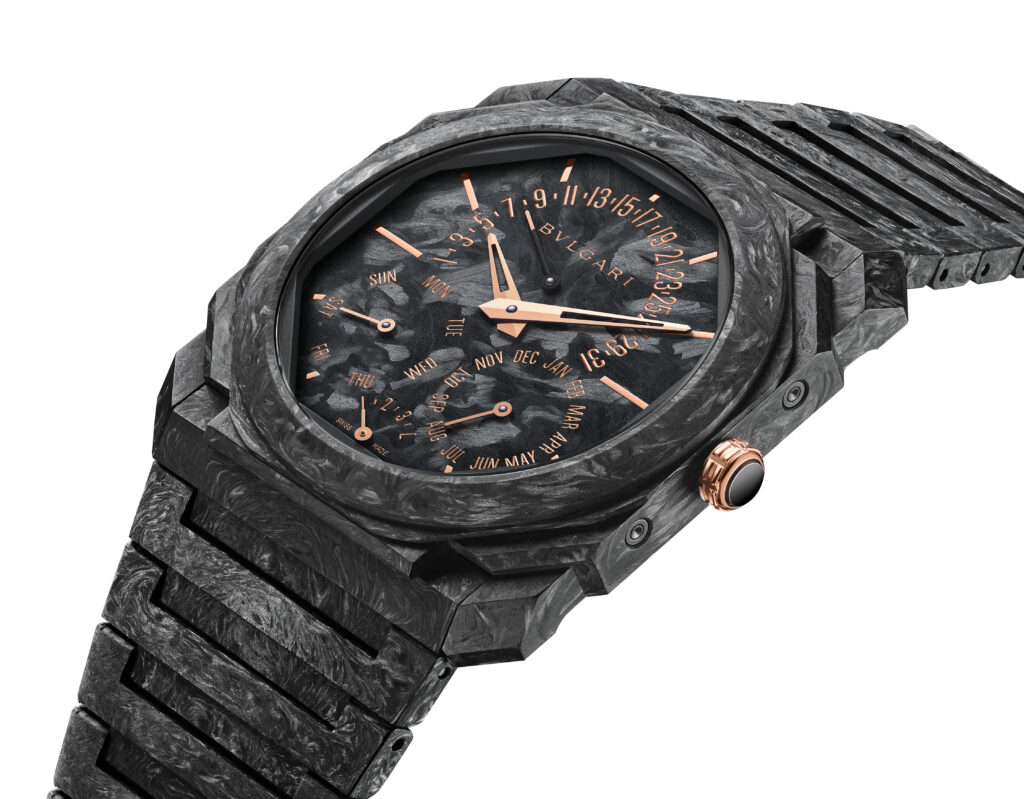
Through its ultra-thin Octo Finissimo collection, Bulgari aims to create unique timepieces by employing techniques such as contrasting polishing or monochrome treatment on a variety of materials like stainless steel, gold and ceramics. Models are consistently striking with round bezels against octagonal surfaces.
Interestingly, and highlighting the significance attached to Geneva Watch Days, year-old brand Byrne released the Gyro Dial Zero in pink gold and its limited-edition set with diamonds. This updated version follows the original rotating-indices watch concept released at the same event last year, in which the dial changes every day on either the stroke of midnight or noon according to the whim of its wearer. This unique attribute occurs as the dial’s four cardinal indexes (at 3, 6, 9 and 12 o’clock) pivot in a flash to reveal a different face. The rose gold-encased Zero offers a new stylish, pared-down beauty exposing the magnificent mechanism within.
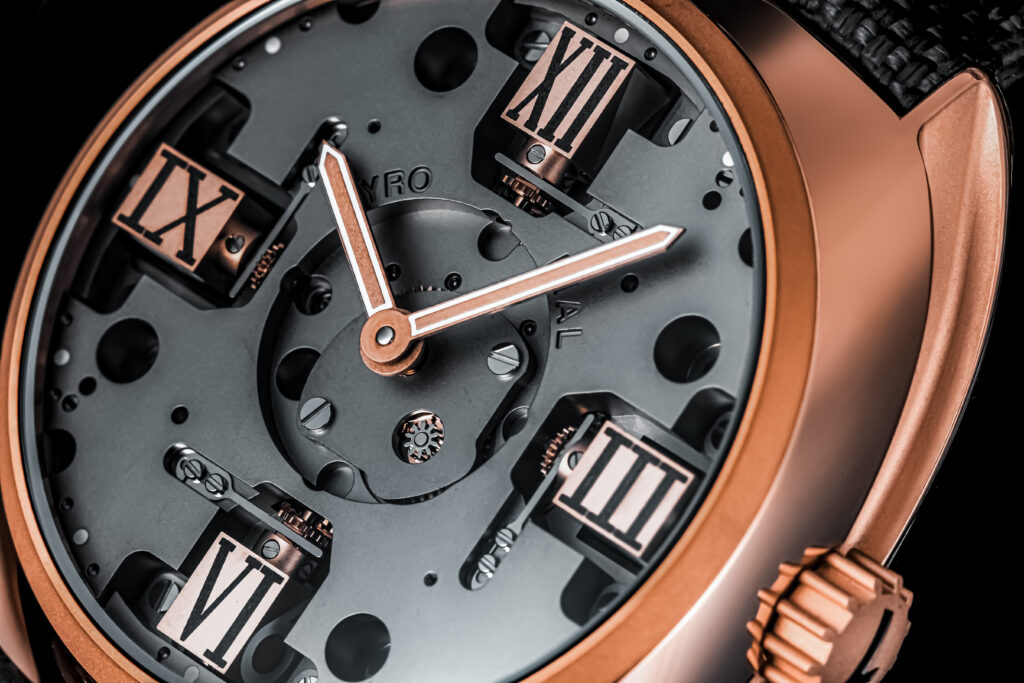
By contrast, Girard-Perregaux, founded in 1791, is one of the oldest fine-watch manufactures still in operation and maintaining all the required horological skills in-house, it has more than 100 recorded patents. It displayed the Laureato Absolute Chronograph 8Tech, the latest model in an ultra-modern collection that uses the best solutions in materials technology. Formed of a carbon/titanium composite in octagonal parts via the 8Tech method, the case creates a random structural pattern. Indeed, the whole watch is made from a combination of differently shaped components and materials playfully juxtaposed together, with its splendid swirl decoration adding further interest. The GP03300-1058 automatic movement can be spied through a smoked sapphire-crystal caseback.

Russian watchmaker and inventor Konstantin Chaykin, known for his unique timepieces and artistic creations, auctioned a selection of his amazing monster-face watches and their accompanying sketches at the event. These included the Smilodon, which takes its inspiration from the prehistoric sabre-toothed tiger and boasts some unique functions; the limited-edition Joker Five, which features a distinctive day of the week indicator; and the prototype of his latest Wristmon, a jovial and optimistic-looking character.
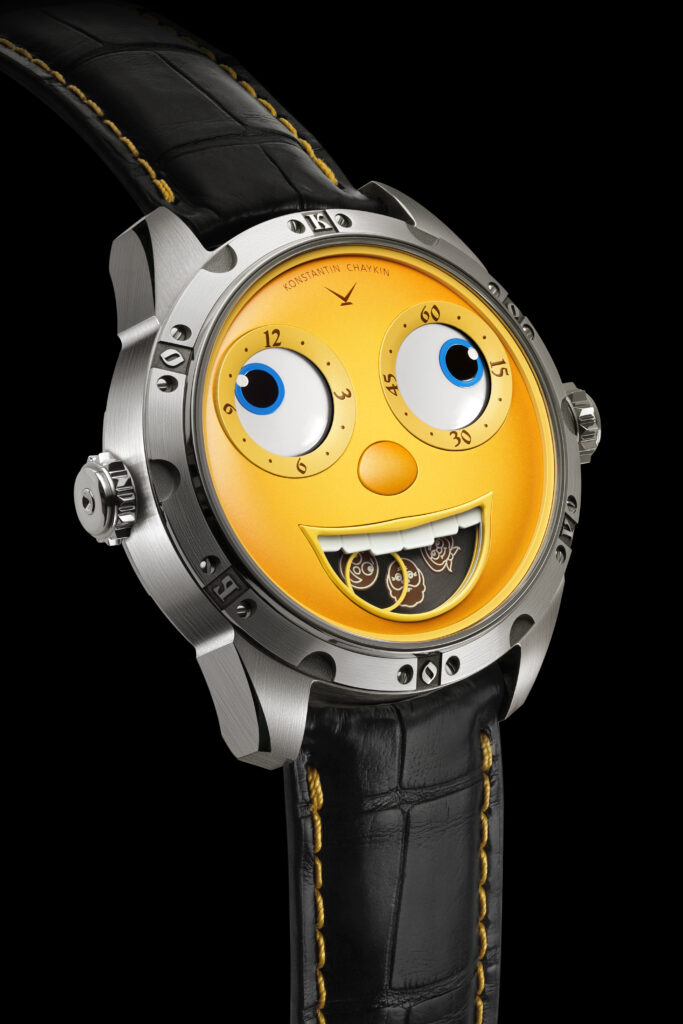
Ulysse Nardin brought out the new Blast Free Wheel Marquetry, a watch which showcases the aesthetic qualities of silicon aside from its undoubted technical specifications. Ergonomically strong with pronounced geometric lines, the 45mm timepiece has an escapement wheel, anchor and balance spring in silicon and uses blades technology. Its ultra-glass box design reveals the avant-garde movement, with a flying tourbillon commanding attention at 6 o’clock. The white-gold case is satin- finished and polished and opened at back with sapphire glass. To top off the unconventional look of the piece, it comes with a distinctive blue matte and polished silicon marquetry dial. The backplate is matte silicon, too.
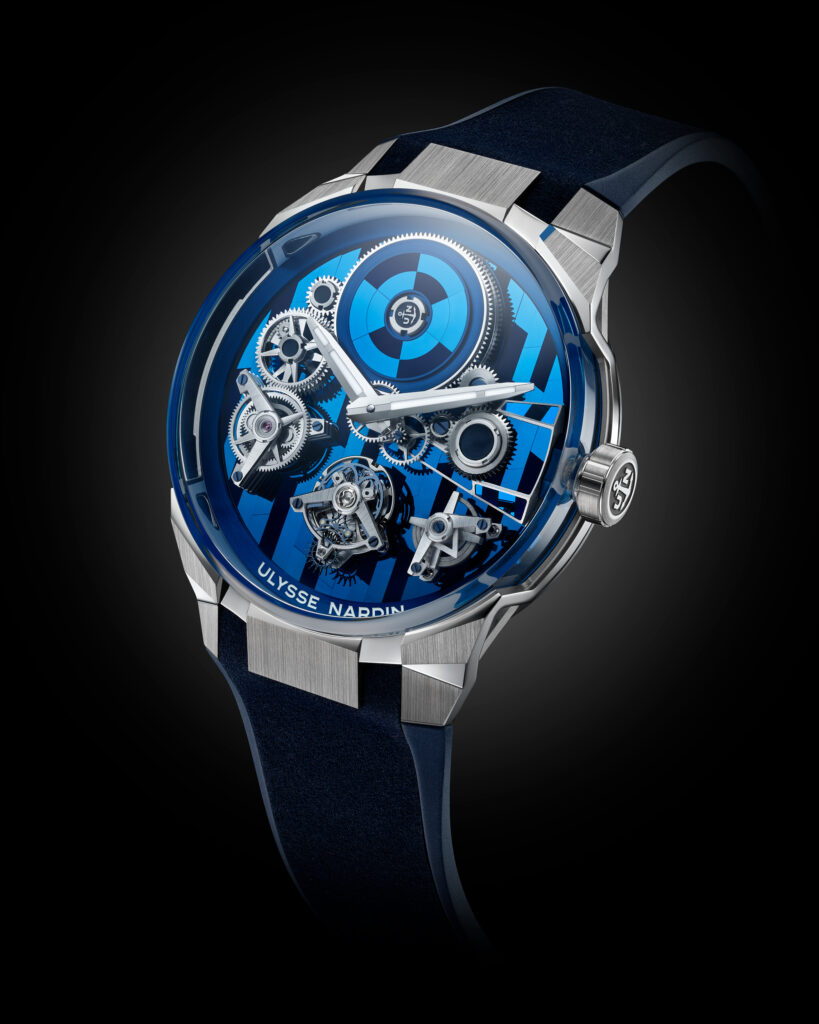
Another Geneva Watch Days highlight was the launch of two models by luxury watchmaker H. Moser & Cie: the minimalist Endeavour Centre Seconds Vantablack and the Endeavour Tourbillon Concept Vantablack. Composed of super-dark carbon nanostructures, which absorb 99.965% of light that hit them, the Vantablack dials can claim to have the effect of a black hole, sucking in all light in mesmerising contrast with their red-gold cases.
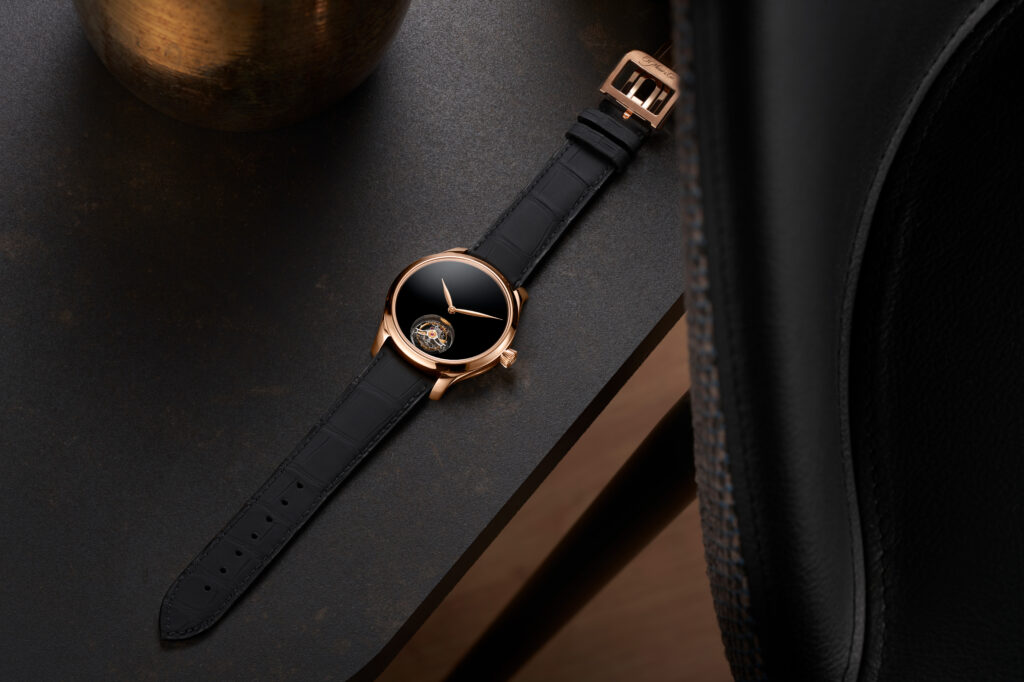
Also Read: Retro Revolution: Old and new harmonise in contemporary re-editions with a vintage vibe
Financial Fair Play: Whether metals, forex or other financial products, investment guru Sam Kima values integrity above all
Sam Kima is proud to have developed a rewarding career in the finance industry, a field he was encouraged to enter following advice from his father in the early 1990s. He comes across as modest and sincere, though delight in his achievements is evident on a wall of his office filled with certificates spotlighting his proficiency to trade in the markets.
“I’m still thriving in this career after more than three decades, winning accolades, awards, spanning Asia to Europe,” he says, indicating a further shelf packed full of trophies highlighting his business success.
Kima established Sam’s Investment Office in London in 2015, and also plays a huge role in sales and marketing as senior vice-president of First Gold. Jakarta-based PT Cyber Futures Indonesia, which specialises in forex, gold and derivative instruments, is another company that banks upon his expertise. He is also a professional senior analyst working under TraderHub Jakarta.
His formative years undoubtedly gave him an international outlook highly suited to the world of finance. Born in Hong Kong and further raised in California, he went on to study at the London School of Economics. He now spends his time shuttling between Hong Kong and Indonesia as well as Europe and Los Angeles, which he describes as his second home. He converses with a slight American twang, and with his strong physical presence, he easily commands attention when he articulates sentences in a deep, booming voice.
Carnegie confidence
Perhaps this innate ability to fill a room with his presence stems from the Dale Carnegie training he undertook at the outset of his burgeoning career. It was a decision that helped him achieve a better life. “Dale Carnegie is super amazing,” he says. “It has considerably influenced me on how to deal with people, colleagues, friends and clients. It guides you to be a smarter person with integrity and morality.”

He believes such training is all-important when developing a career in a people-centred occupation like finance, and credits the course with nurturing a whole raft of skills. “It develops communication, confidence, problem-solving, emotional intelligence and self-awareness,” he says.
Caring spirit
A sense of integrity is also fundamental to Kima’s attitude to work and his desire to partake in community service. For instance, every Tuesday he volunteers together with a group of influential community leaders to help serve food to more than 500 impoverished elderly people in Hong Kong. He believes these kinds of activities make someone a more positive person with other knock-on effects: “The better your character traits mesh with your career, the more productive and positive your job performance will be.”
He also reveals that he is a passionate believer in self-care and investing in activities that nurture body and mind. “This is not in a selfish way,” he adds.
Hungry for more
Kima likes to set and achieve goals, and his early banking career was spent mastering economic fundamentals like how technical charts play a big role in clients’ decision-making, and how various financial products, forex, gold and silver fluctuate according to data and news. He thrived on the adrenaline rush, constantly learning about the markets, and this made him hungry. “It is an amazing field and I loved what I experienced and was doing,” he recalls of the time.

This hunger has stayed with him. One can sense he is constantly checking the newswires to sense the market direction. The day of our meeting was soon after the terrible events in Israel and he noted a flight to the dollar as investors sought security in an uncertain world.
The fear factor
Shifting assets to the security of gold is another phenomenon in turbulent times, especially when the fear of inflation is pervasive. “As inflation occurs, investors increasingly turn to gold as a hedge, driving demand and price upwards,” he explains.
His team is part of a tightly interconnected network spanning Australia, Indonesia, the UK and Hong Kong in the rapidly developing investment brokerage field. Live analysis reports by their expert advisors on their state-of-the-art 24-hour trading platform can be the difference between clients making a profit or loss in the most lucrative forex and precious metals markets, according to Kima. He also states they can offer the most competitive spreads and that industry leaders from the Asia-Pacific region turn to his team for their wealth management and analysis reports.
Internet immediacy
He believes one of the main reasons why gold and forex investing is so easy – and attractive – is its accessibility. “Anyone with an internet connection and a computer or mobile device can access the market. Forex and gold brokers provide traders with trading platforms that allow them to buy and sell currencies, view charts and access real-time analysis and news,” he says.
His services aim to reduce the time it takes for an order to be routed to the servers for execution, something known as latency. “The high liquidity of forex and gold means that transactions can be completed quickly and easily, and that spreads are often very tight – meaning the underlying market price won’t have to make a significant positive move in order for your trade to be profitable,” he says.
Get-rich-quick worry
As he sits in his office in front of a shelf crammed with a bust of Mao Zedong, beautiful Chinese figurines and a lovely model of a traditional sailing boat, he talks earnestly about the dangers of naive and small investors who do not do their homework before putting their savings into investment vehicles. He is acutely aware that the reputation of the financial sector has taken a battering over recent years, and passionately believes that credibility is all-important when dealing in finance. Indeed, he reveals that he did an interview warning of the dangers of cryptocurrency just prior to the great unravelling.
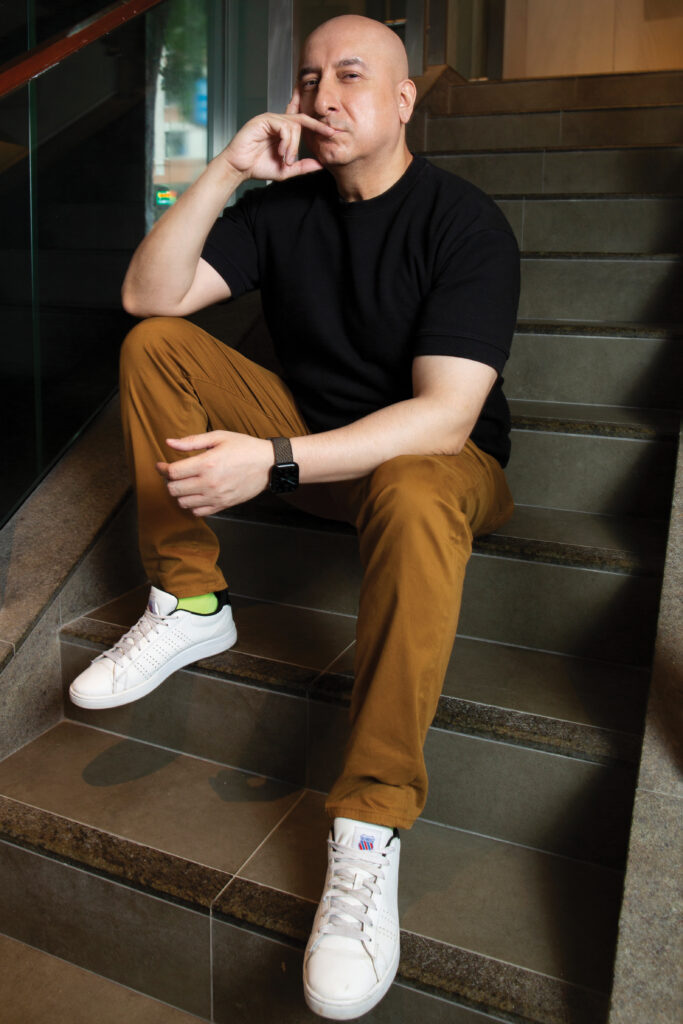
He fears inexperienced investors post- Covid are exhibiting a dangerous get-rich-quick mentality, and perhaps with this concern in mind, he makes sure his investor clients first go through demo accounts to trade without using real money. “We must make sure that prospective clients are well educated about our markets and understand the fundamentals prior to putting funds in the real market,” he says.
Top track record
For our photo shoot, he dons an assortment of strikingly coloured suits, and there is certainly the showman side to his persona. In a wistful moment, he yearns for the return of the big pre-Covid society bashes. But he knows what traits are most important: “You will not find one bad review on a search engine about the companies I am involved with,” he reveals with immense pride.
“Integrity, loyalty, reviews, honesty and track records are the main ingredients and reasons for investing with us,” he adds.
Interview by: Neil Dolby Photographer: Jack Law Videographer: Jack Fontanilla
Do So to Sleep: Solutions to insomnia go deeper than a comfy mattress and sleeping pills are not the answer
Sleep is one of three pillars of health so being deprived of it can have serious long-term health implications. Insomnia is known to affect most people during some stage of their life, especially in times of emotional difficulty or extreme stress. For some, though, it is not just a temporary situation but a debilitating condition.
History has seen plenty of famous insomniacs – painter Vincent van Gogh, former US President Bill Clinton and actress Marilyn Monroe all suffered, as did the King of Rock ’n’ Roll Elvis Presley. Speaking to a television interviewer at the peak of his fame in 1956, Elvis said: “I’ve been kind of nervous all my life. And now, going out on personal appearances all the time, I get so keyed up that I just can’t relax.” Nerves and adrenaline would so affect him after live performances that he could not sleep. “You know how hard it is, getting to sleep in a strange room and in a strange bed away from home, particularly when you are kind of nervous and jumpy.”

He went on to describe a scenario familiar to insomniacs the world over: “I’ll go to bed at night and close my eyes and just lay there. And then I’ll start turning. And twisting. And a couple of hours will pass, and I won’t have had had a lick of sleep.”
Stages of sleep
A typical night’s sleep (for those who can) spans four or five sleep cycles, each lasting between 90 and 110 minutes. Sleep comes in stages during which different brainwave patterns are exhibited. As we first start to sleep, we spend a few minutes in relaxed wakefulness with eyes closed and brain emitting alpha waves. Next is Stage 1 proper, a drowsy, relaxed state as muscle tension lessens and we experience sensations analogous to daydreaming. After a few minutes of Stage 1, we move into Stage 2 where brainwave patterns called sleep spindles and K-complexes occur, but this is still a light stage of sleep.

Finally, we reach Stages 3 and 4 which are slow-waved or deep sleep. Physiological activity including respiration, oxygen consumption, heart rate and blood pressure subsides to a low. It is difficult to awaken from deep sleep as awareness of the exterior world is shut out. Usually, this deep sleep lasts for about 45 minutes before progressing to rapid eye movement (REM) sleep or the dream stage where heart rate and breathing rate increase. This more visual and emotional stage is when we are more likely to awaken but will fall quickly back to sleep. Sound sleepers will repeat these cycles through the night.
Types of insomnia
Elvis’ problem of falling asleep – lying awake tossing and turning – personified one of the three types of insomnia. The other two are waking after some initial sleep and then being unable to return to sleep; and poor quality of slumber despite having no difficulty getting to sleep. While those in this latter category do sleep, they do not feel refreshed in the morning, as though they failed to attain deep sleep.
Deep sleep normally lasts longer during the early part of sleeping and as the night progresses awakenings are more common since sleep becomes lighter and REM periods increase in duration. Deep sleep is considered critical as a major biological restorative function and means to renew physical energy. The REM stage of sleep remains least understood by scientists, along with the consequences of being deprived of it.

What is known is that long-term insomnia can increase the risk of depression, diabetes, cardiovascular disease and Alzheimer’s disease as well as general increased irritability and reduced concentration levels and decision-making ability. Disturbed sleep must occur at least three times a week over more than three months to be considered insomnia.
Sleeping pill dangers
To combat his insomnia and anxiety, Elvis experimented with or was prescribed a wide variety of prescription drugs including sleeping pills that were designed to help him relax and achieve better quality sleep. Sleeping pills, though, usually come with side effects. Recent research by New Scientist uncovered that many of the drugs used to treat insomnia like benzodiazepines offer no long-term relief and may cause daytime fatigue, dizziness, general mental fogginess and the risk of dependency. Andrea Cipriani and his team at the University of Oxford found weak evidence that pills offer even short-term benefits and recommended against prescribing them as a first line of treatment.
Sleep hygiene hype
Good sleep hygiene such as a comfortable mattress and thick curtains and avoiding alcohol and caffeine late at night were all thought essential to avoid disrupting sleep patterns. However, a 2021 academic review of 89 studies into insomnia treatment found that education about sleep hygiene produced barely any improvement in symptoms. The underlying mental processes causing insomnia need to be tackled effectively to have greater success.

Scientific research suggests many people with insomnia are in a state of hyperarousal. According to research by Yishul Wei at the Netherlands Institute for Neuroscience, they are often locked into a pattern of negative, repetitive thoughts which affects their sleep pattern. Often, merely thinking about lack of sleep can lead to worsening symptoms (such as fatigue) irrespective of the actual level of sleep obtained.
Talking therapy solutions
Psychological therapy by trained practitioners may provide solutions for the negative, ruminating thought patterns that inhibit sleep. Techniques developed during sessions of Cognitive behavioural therapy for insomnia (CBTI) can reduce sleep performance anxiety; indeed, research suggests 70% of sufferers showed improved sleep after CBTI, with a good chunk of those going into remission. Mindfulness-based therapy for insomnia (MBTI), which involves non-judgmental awareness of the problem using the Buddhist philosophy of acceptance, may also help to lessen rumination and stress. It has borne significant, long-lasting results according to recent studies.

The reasons behind each person’s insomnia are unique, but researchers at the University of Amsterdam have identified five sub-types of the condition, finding that some people with particular sub-types are likely to develop symptoms such as depression – they suggest CBTI would be beneficial in these cases.
Apps are springing up to provide CBTI courses for those struggling to get a good night’s sleep, and AI algorithms are being utilised to personalise them to the needs of individual insomniacs. Other apps via a smartwatch or phone can deliver short pulses of restful sound at night to induce slow brainwaves associated with sleep. Many scientists agree these solutions are far preferable to the risk of becoming hooked on sleeping pills.
Fan Flair: Yesteryear’s handheld fashion accessories are being handmade by modern artisans
Hand fans have a long-standing history in Chinese culture, dating back more than 2,000 years. Originally used purely as a functional tool to provide respite from the scorching summer heat, they soon evolved into works of art. Embraced by the literati and nobility, fans became symbols of sophistication, elegance and social status.
Today, beautifully made folding fans have become treasured collectibles, popular souvenirs and cherished gifts. They are meticulously handcrafted by skilled artisans, who pay attention to every detail. After selecting the finest materials such as silk, paper and bamboo, they carefully paint or embroider intricate designs on the surface that often depict scenes from mythology, nature and folklore, or represent cultural symbols such as dragons, peonies and lotus flowers. Traditional hand fans are now an art celebrated around the world, from cultures as diverse as Japan, China, Spain and France.
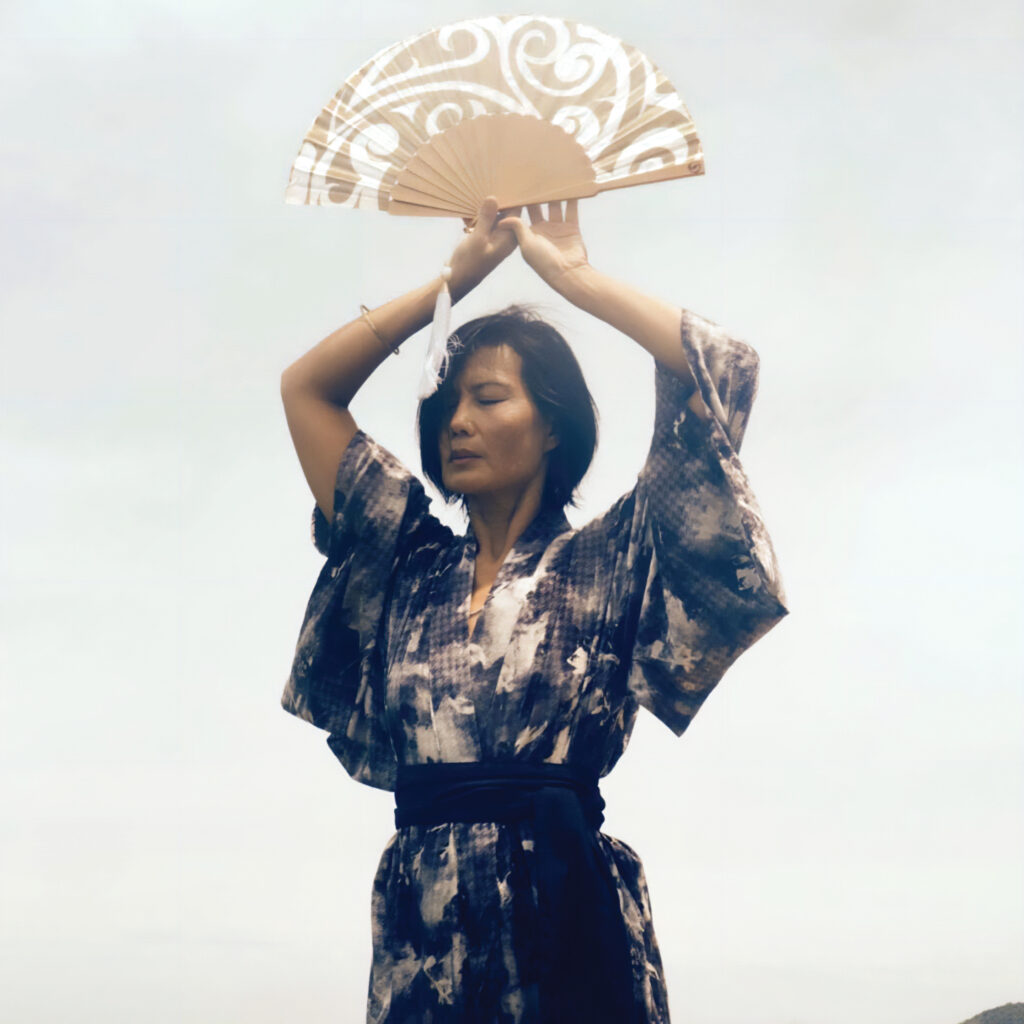
Rockcoco Fine Fans
Billed as the first bespoke fan makers in London for a century, Rockcoco Fine Fans is the brainchild of sisters Denise Frankel and Janis Sher whose passion for antique and vintage hand fans evolved into a business. After receiving regular compliments for the pieces in their personal collection, they began to make their own and take orders from around the world. Their vision was to fill the shoes of dedicated luxury fan boutiques that inhabited London’s main shopping streets in the 1920s.
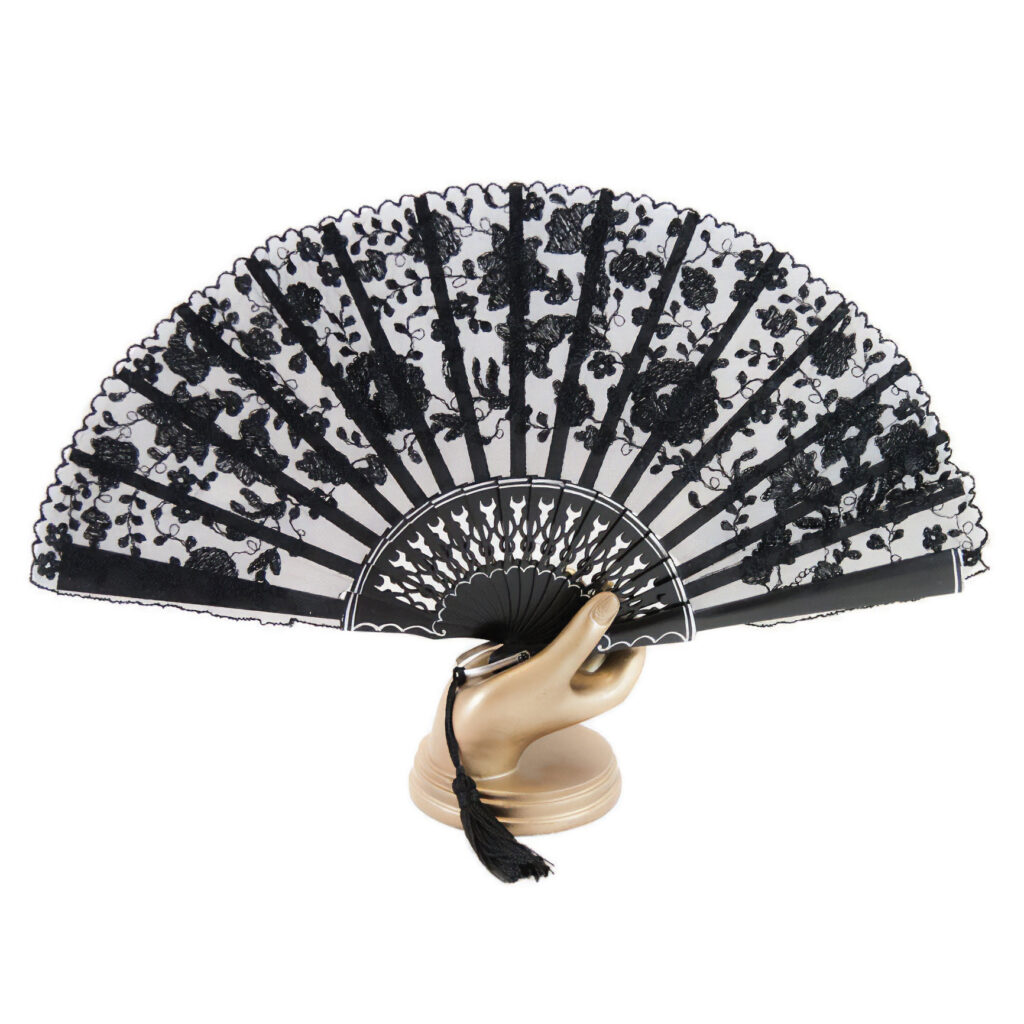
Rockcoco’s striking ready-to-wear collection starts from £55 (about HK$525), but it is the quality of the custom designs that is truly remarkable. Materials are obtained from British royal warrant-holders and precious stones are ethically sourced. From the engraver of the mother-of-pearl, the goldsmith that creates the gem setting and the rivet which holds the fan together, the gilder that finely applies gold leaf into the engraving and the bespoke tassel makers, skilled British artisans work in harmony to bring each fan to life. rockcocofans.com
VLC Hand Fans
Another all-in-the-family venture, VLC Hand Fans is based in the United Kingdom but has its roots in Valencia, where fan-making developed in the early 1800s and became part of Spanish culture. A secret hand-held language sprung up as lovers flirted through alluring gestures and provocative swishes of their fans.
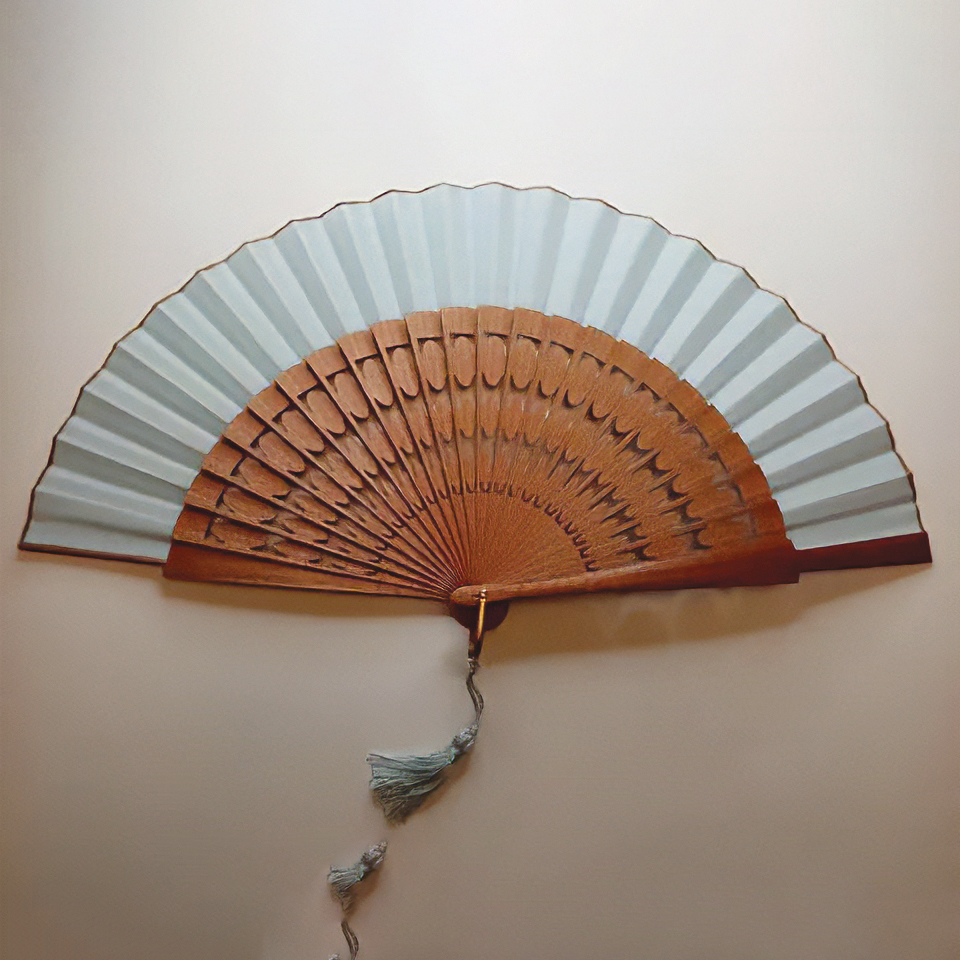
The duo behind VLC, Pilar Taberner Quiles and daughter Isabel, hail from a family long involved in the artisanal craft. The fans they sell are made in the traditional way – hand-crafted, hand-painted and hand-assembled in Spain – so each one is unique. Top-of-the-range wood such as sipo, palo santo and ebony is paired with exquisite fabrics including lace, chiffon and feathers to create luxurious and distinctive designs.
Their fans are striking fashion accessories or serve as decorative art to showcase at home. For bespoke orders, their team of craftspeople carefully select the finest materials, vibrant colours and different wood carvings and textures to meet the requirements of clients. Non- bespoke prices range upwards to £170 (about HK$1,700) and vary widely according to the level of detail and material selection. vlchandfans.com
House of Duvelleroy
One of the oldest and most luxurious hand-fan boutiques, Duvelleroy was founded in Paris in 1827 by Jean-Pierre Duvelleroy, whose royal clients included Queen Victoria and the Empress of Austria. A venture born of one man’s dream to bring fans back into the hands of elegant women has remained faithful to the traditions of French fan-making.
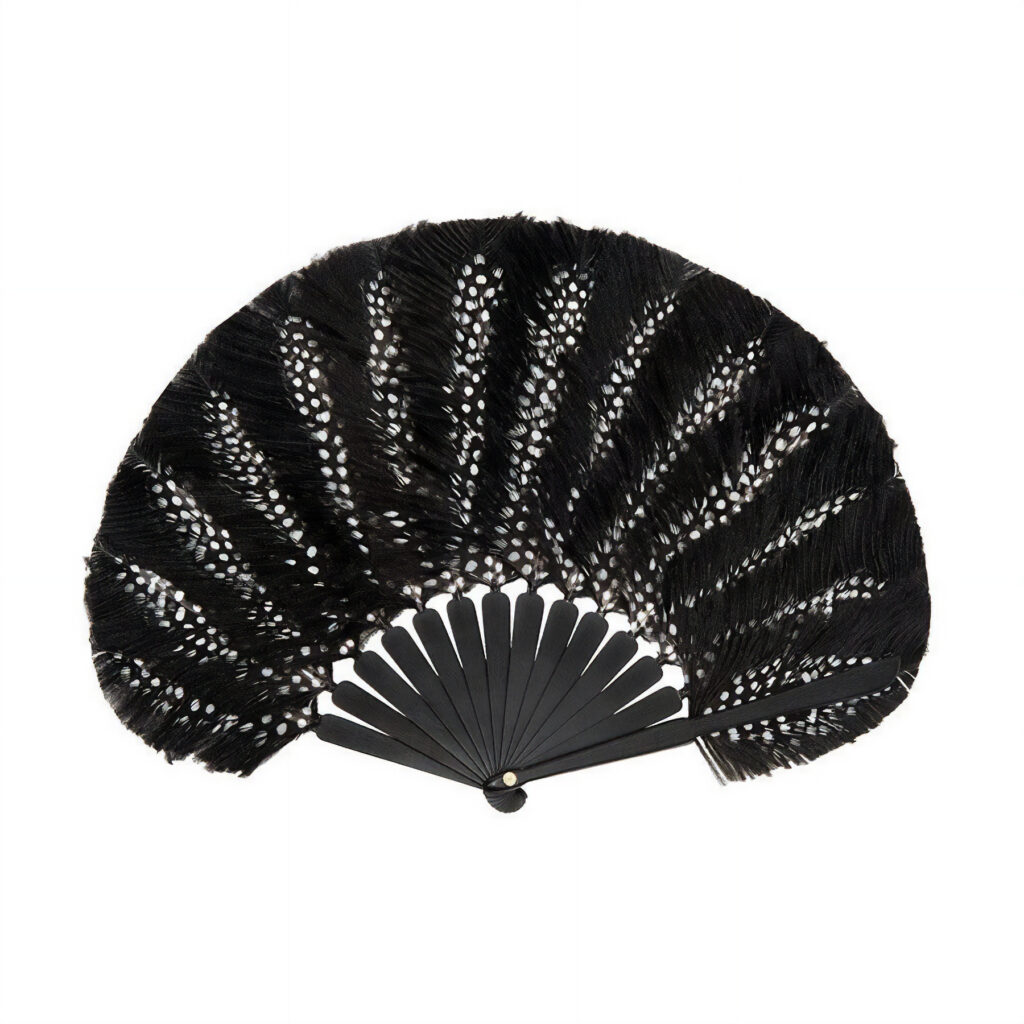
Engravers, pleaters and embroiderers are involved in the manufacturing of these precious objects. A fan-maker, one of the last in France, assembles every piece by hand and each is embellished by a golden daisy, the emblem of the house. Raw materials of horn, ebony and mother of pearl are cut into layers of only 9-10mm thick, which are then trimmed again and shaped, in the French style, into supremely light frames of 14 sticks. Polishing and engraving are the final touches before the sticks and their outer guards are fastened together by a rivet. Prices rise from US$69 to US$2,250 (about HK$540 to HK$17,600) for the most elaborate designs. laperfectionlouis.com
Sukhari Designs
A Taiwanese artist and global traveller, Sukhari Yang expresses beauty and refinement through handmade crafts, which include gorgeous silk fans. The product of rich, artistic influences from Italy to Indonesia and a celebration of the universality of cultures and traditions, her collections are theme-based and handmade by Balinese artisans. Among the most popular are the Lotus Born Master and Flower of Life collections.
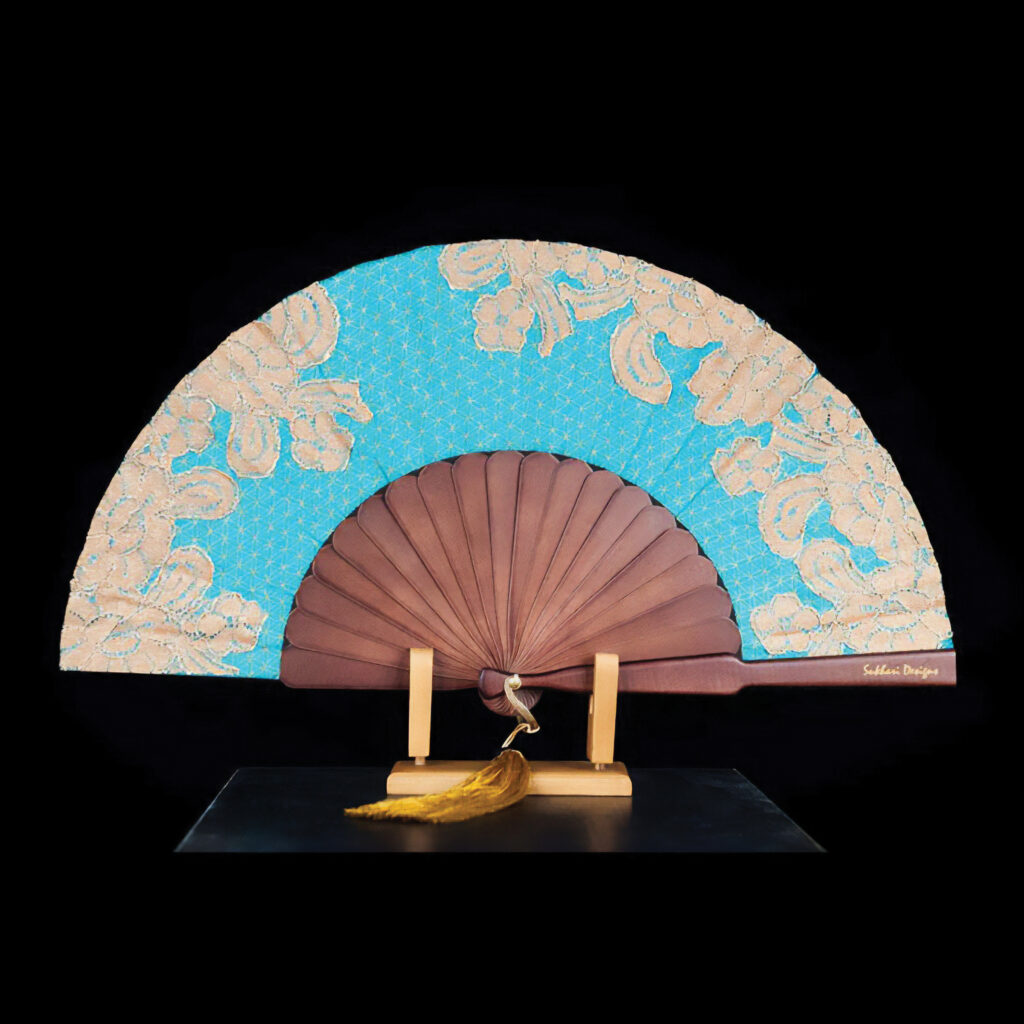
Each Sukhari silk fan takes about three weeks to produce with their carved and polished wooden spokes and handles providing quality and effortless movement. They embrace unique embellishments such as an ornate brass ring that can be used to hang the fan from one’s attire and tassels featuring semi-precious stones, and each comes in a black silk slip case. A leather belt with a fan holster is another novelty for fashionable clients.
Varying in size, colour and design, the fans draw on sacred geometry for their perfect form, proportion, harmony and value. The most affordable options start at US$69 (about HK$540) with no compromise in beauty or intricacy. sukharidesigns.com
Ones to Remember: Award-Winning Interiors and Divine Dishes Ensure a Blissful Evening at 1111 Ones
Upscale Italian and French food becomes the food of the angels at 1111 Ones, the Central restaurant that checks off all the requirements for a pleasurable modern European dining experience – superb cuisine, chic and opulent interiors, top-notch beverages and more – then daringly elevates them to a higher plane.
Named for an angel number that celebrates new beginnings in life’s journey, 1111 Ones draws on the vision and direction of Chef Chris Chan, a culinary specialist with more than two decades of expertise and a prestigious background at a two-Michelin-starred restaurant. The unhurried interiors are reminiscent of the much-photographed Antelope Canyon in Arizona. Undulating waves of the high vaulted ceiling and warm, rusty colour tones are further highlighted by a wooden floor, straightforward wooden chairs and tables and accents of grey rock formations.
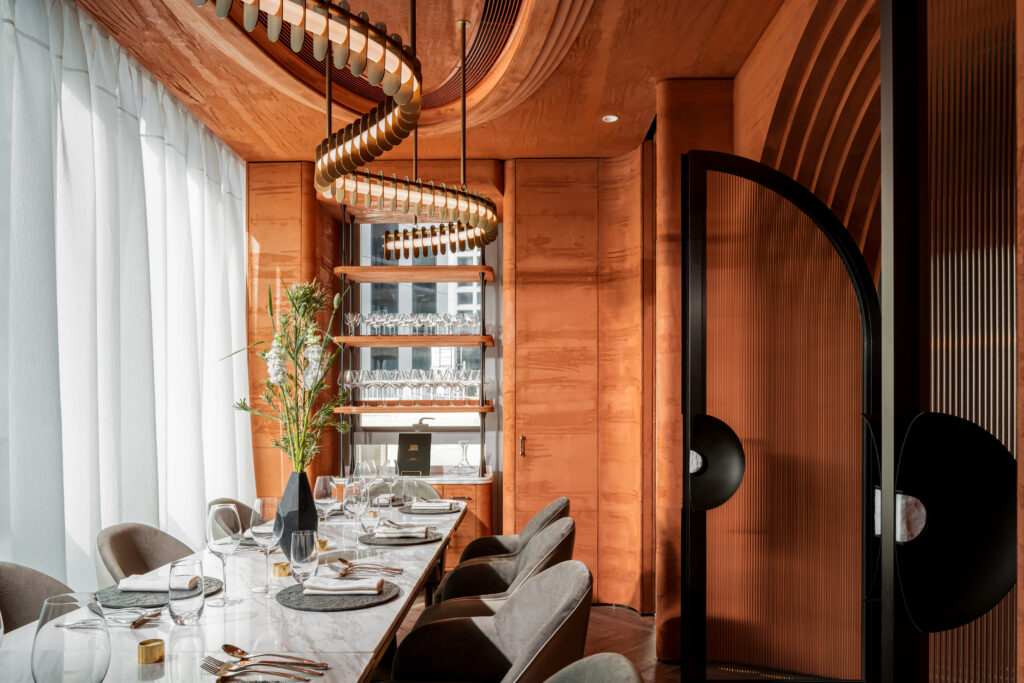
A bar with a marble countertop grounds the area, and its line-up of Italian liqueurs waiting to be served is another of the many unique touches in this dining room. All of these elements made the restaurant an overall winner of the 2022 International Restaurant & Bar Design Awards.
“It is said that those who continuously see this angel-number sequence will have great things coming their way. We are dedicated to providing a tranquil environment with divine food, where guests can forget about their life qualms and truly feel at peace,” proclaims Chef Chan.
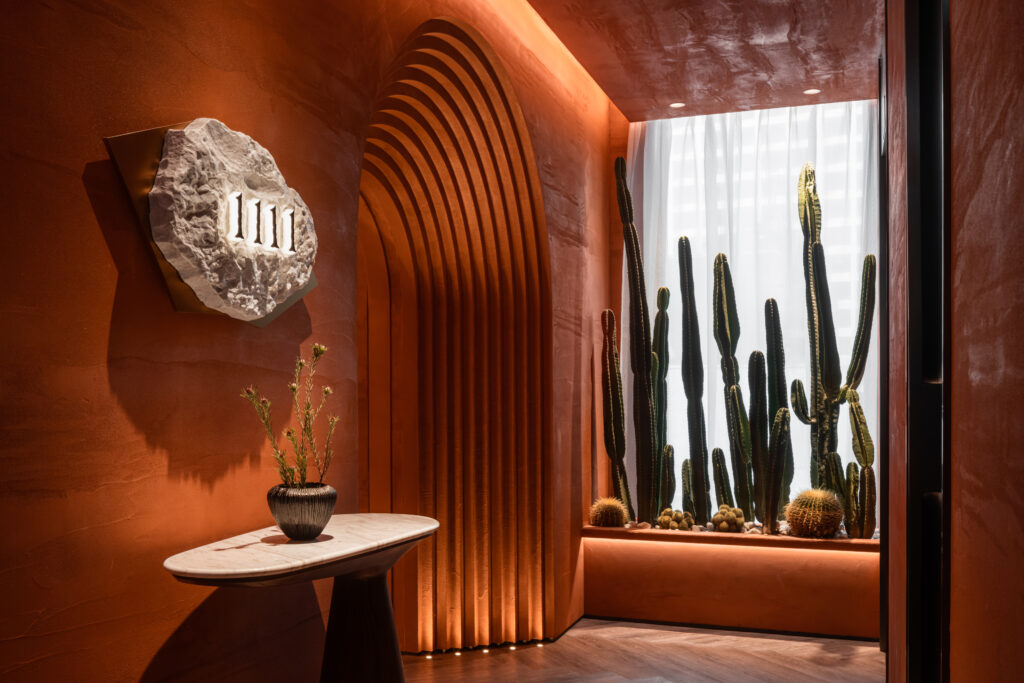
Just as the interior features aim to seduce the old and new guard, the menu also succeeds in pleasing both. A fresh ingredients plate presenting the key elements of the tasting menu is provided before diners start their culinary trip so the mind can be primed for the gastronomic offerings ahead.
Chan personally selected the French Oscietra caviar for the first course. The second appetiser sees toro – the fatty underbelly of Japanese bluefin tuna – uniting with Hokkaido sea urchin and the fresh tomato consommé jelly.
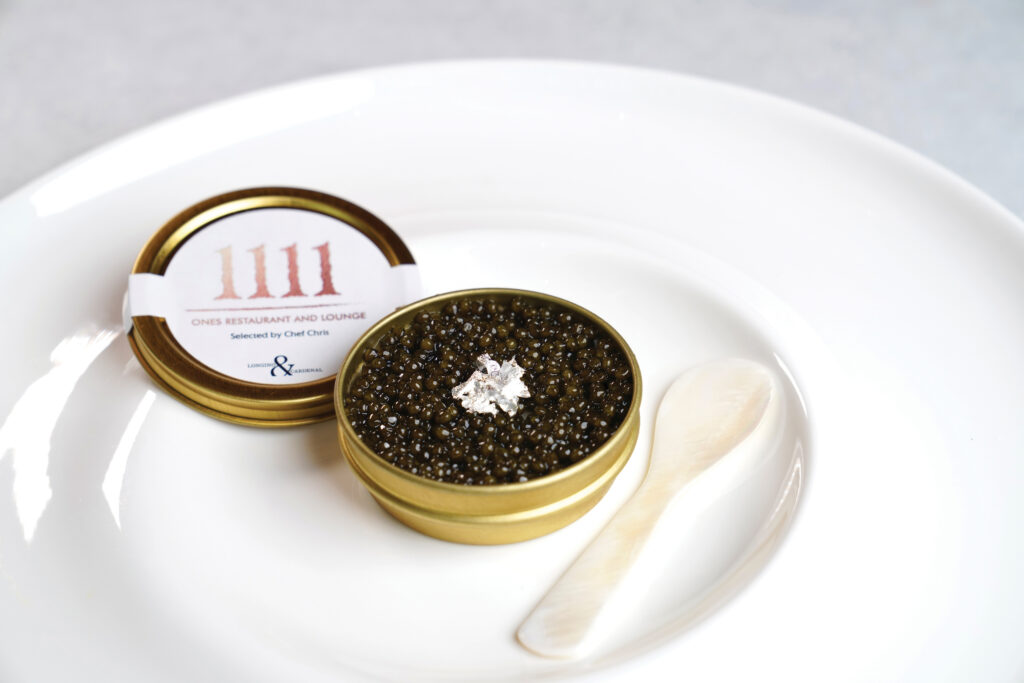
The next dish features monkfish liver, cooked using the same technique as foie gras to achieve a similar texture and flavour. Morel is another luxurious creation, with the prized scented French mushrooms prepared in a method borrowed from Asian-style kitchens. It is stuffed with cuttlefish paste and served with squid on the side.
Amadai urokoyaki – tilefish grilled with its scales intact – is a standout among the main courses. The flavour of the fish is enhanced by the crispy scales and further highlighted by the accompanying onion chutney. African yellow croaker fish maw is another prominent dish, presented on top of a French-style lobster soup and rice crispies, giving the combination of tastes a distinctive twist.
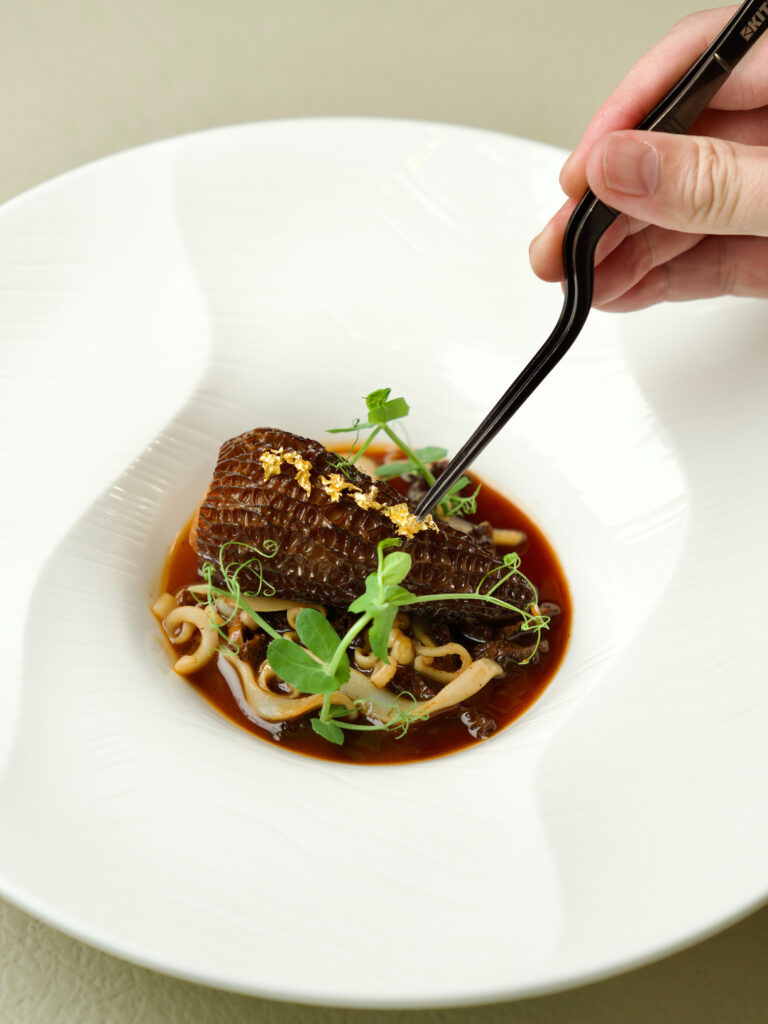
The meat main of Hida beef – a supreme wagyu from Japan’s Gifu prefecture – is served with fresh parsnip and asparagus as well as a purée of pumpkin and black garlic. Alternatively, the Spanish deep-sea red treasure of carabinero is grilled on binchotan (Japanese white charcoal), presented with tom yum- infused puntine and augmented by roasted straw mushrooms, dried lime slices and Thai basil emulsion.
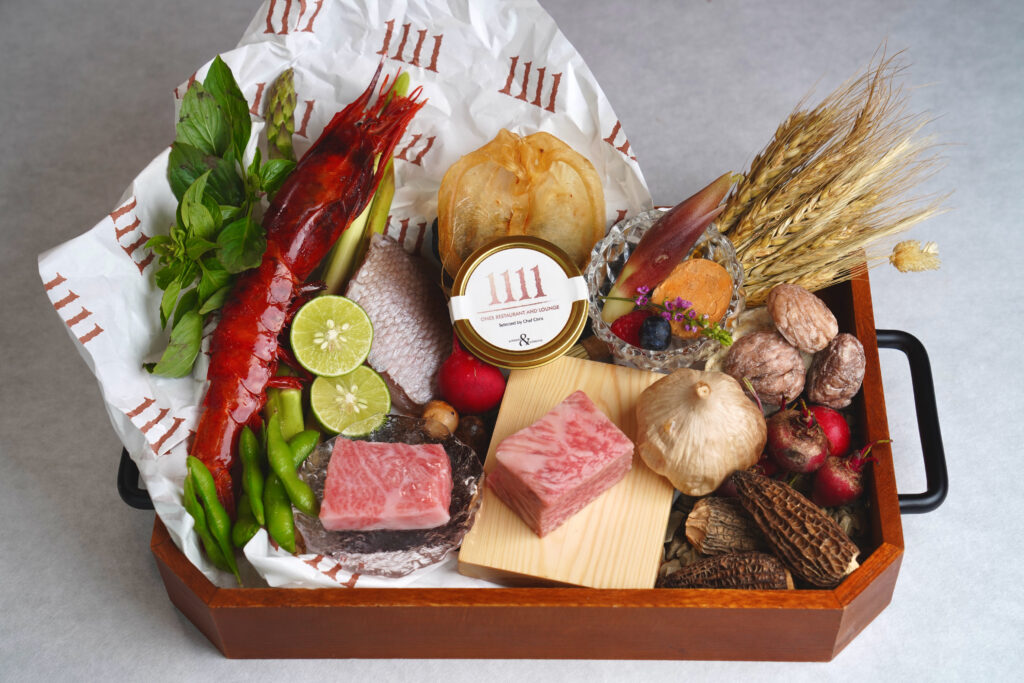
Desserts, of course, are not to be missed. The beetroot sweet is served with Granny Smith apple chunks and jam and topped by a French-style baked meringue. The second dessert melds chestnut and chrysanthemum – rich chestnut paste wrapped around vanilla mousse and served with smooth and sweet chrysanthemum ice cream and tangy dried fruit.
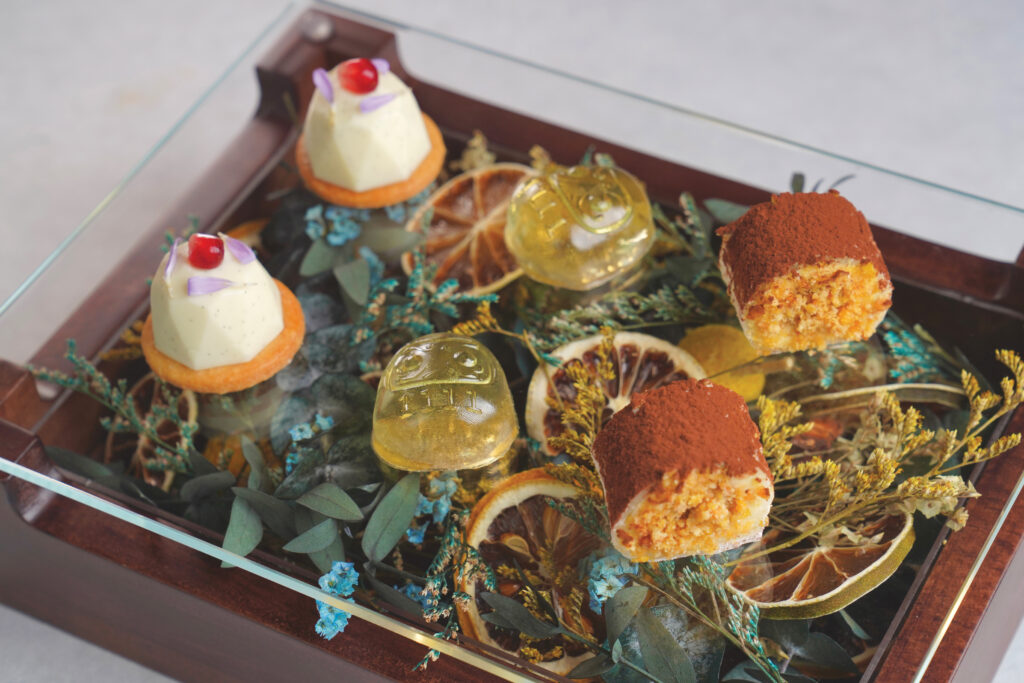
The chef will offer guests a yuzu sake jelly that resembles a Daruma doll at the conclusion of the meal, in a nod to the angel number.
While those of us who venture here for a rare night of dizzying culinary bliss will return back to earth to our go-to comfort food, whenever we sit down to a European meal, we will be reminded of 1111 Ones and all we have been missing.
1111 Ones Restaurant & Lounge, 11/F, 18 On Lan Street, Central, Hong Kong. Tel: +852 2910 1128, 1111ones.com
Text: Joseff Musa Photos: 1111 Ones Video: Jack Fontanilla
The Mermaid’s Tale: Halle Bailey makes a splash in the groundbreaking role of Ariel – under the sea and above it
Halle Bailey never anticipated that she would be called for the main role in Disney’s live-action musical adaptation of The Little Mermaid. She believed, Ariel, the Disney princess who gives up her voice and mermaid tail to be with a “spineless, savage, harpooning fish- eater” human – would not be played by an actress who looked like her, despite her obvious credentials. The 23-year-old popstar has been writing music since the age of eight, opened for Beyoncé in Europe at 16, and has five Grammy nominations.
“I love that there’s so much Black diversity on screen now,” she says. “There was a time when we’d barely see locs – and now we have a Disney princess with them. It was super important for me to have my natural hair in this film. I’ve had my locs since I was five, so they’re a huge part of who I am. We need to be able to see ourselves, we need to be able to see our hair on big screens like this so that we know that it’s beautiful and more than acceptable.”
Beyoncé protégé
Before her successful Disney big-screen debut, Bailey was best known as one-half of the sisterly pop duo Chloe x Halle, whose first claim to fame was their YouTube cover of Beyoncé’s Pretty Hurts grabbing the attention of the music legend herself. The song changed the teenagers’ lives, propelling them to overnight prominence. They became the opening acts for both Beyoncé’s The Formation World Tour and Andra Day’s Cheers to the Fall Tour in 2016 and released popular EPs and albums including Uncovered, Sugar Symphony and The Kids Are Alright.

Their musical style, which transcends genres, distinguishes Chloe x Halle, two years her senior, from other artists. “My sister and I would always play mermaid in the pool,” she recalls. “Our first mixtape was called The Two of Us – I think weput it out when I was 15–and on the cover,I’m wearing my favourite mermaid blanket; it’s like a mermaid tail. Looking back, I’m like, that’s so weird. In a way, it was a coincidence. But really, it was the universe or God [giving me] a hint.”
Musical youth
Born in Mableton, Georgia, Halle picked up the cello and violin at a very young age, and like her sister learned how to play the guitar by studying YouTube tutorials. Noticing their musical development, their father, Doug Bailey, became their full-time manager, arranging for the girls – the middle pair of four siblings – to perform in the Atlanta area.
The family relocated to Los Angeles in late 2012 when Halle was 12. Two years later, Chloe x Halle signed with Beyoncé’s Parkwood Entertainment management company and record label. By 2021, the sisters had released two albums and earned a slew of industry accolades.
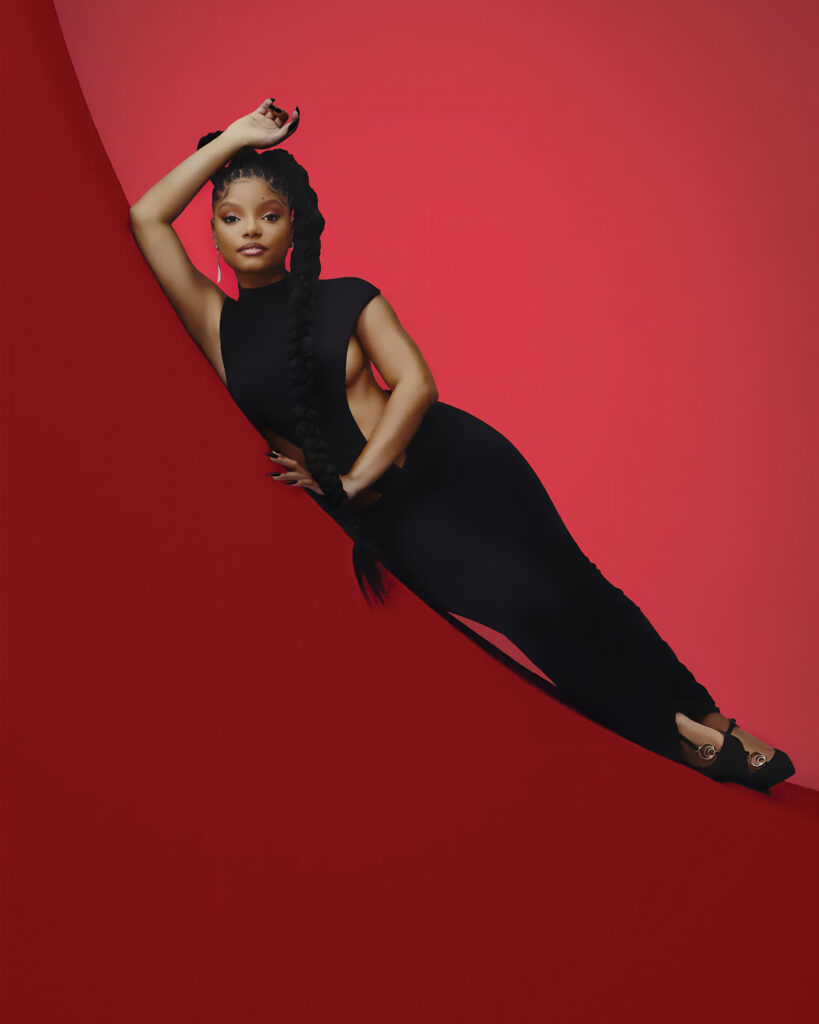
“One major high would definitely be when my sister and I were nominated for Grammys,” she says. “We sang Where Is the Love by Donny Hathaway and Roberta Flack, and that was actually the performance that got me noticed by Little Mermaid director Rob Marshall. It was confirmation for me that my own abilities and belief in myself [is enough]. I believed in myself for the first time.”
Purple patch
In addition, Bailey is a fantastic actress who made her screen debut in the 2006 romantic comedy Last Holiday. She then appeared in the 2012 films Let It Shine and Joyful Noise, and has played Skylar in the American TV sitcom Grown-ish. Completing a hat-trick of films this year is The Line, which premiered a few months before the Disney musical, and the much anticipated The Color Purple, based on the stage musical and Pulitzer Prize-winning novel by Alice Walker.

“I am so excited to be playing young Nettie in The Color Purple. This film has meant a lot to me for a very long time – it’s a Black family staple,” she says. “I also got a chance to write an original song for the film. It’s been really cool to incorporate my artistry into this new world of acting. I’m just so grateful to be a part of the film. I cannot wait for people to see it. I think they’ll love it.”
Breaking the mould
Early this year, when the first pictures of Bailey as Ariel appeared on social media, there was a definite shift toward a new normal that was felt all over the world. The internet was inundated with videos of young Black girls excitedly responding to an Ariel they could identify with. Disney broke the mould when choosing its lead actor, and The Little Mermaid delivered a plethora of surprises appropriate for the new decade. The movie – and Bailey – are taking the responsibility of its global impact seriously.
She says: “My main goal has always been to stay true to myself. There’s so much more to being a young woman than this fairy-tale character. I think other people have a hard time separating who Halle is and who a princess is – and that’s natural when you’re a fan of an artist. But it’s a beautiful thing to be a layered individual and not fit into one certain image.”

Bailey imagines herself working as a nurse, paediatrician or a kindergarten teacher if she had not broken into entertainment. As to whether she ever yearns for the realism seen outside the Hollywood bubble, she remarks: “It’s fun to think about, but honestly, no, because this has been my normal for so long.”
Greater purpose
Instead, she is careful not to let her work as an artist and entertainer distract from the purpose she would like to fulfil. “The awards and the accolades and the people complimenting, it’s all great, but what [am I] here for really?” she ponders. “What am I doing to give it back to God? What am I doing actively to be a better person every single day?”

Arguably, her historic role as Ariel is indeed part of her larger purpose, and something she is – and should be – remarkably proud of. Some people believe that our fate is predetermined. Some people think we can control our own future. But for Halle Bailey, both these factors may have contributed to her extraordinary rise from child prodigy to bona fide Hollywood actress.
Spice It Up: Serving the season’s fiercest looks
SPICE IT UP! Our fashion pages this month are serving the season’s fiercest looks. From the runway to our everyday life, fashion choices allow us to express our individuality and create a visual identity that captures attention. Unlock the key to an extraordinary wardrobe that exudes style, versatility and trendiness with our most loved runway looks.
Look 1
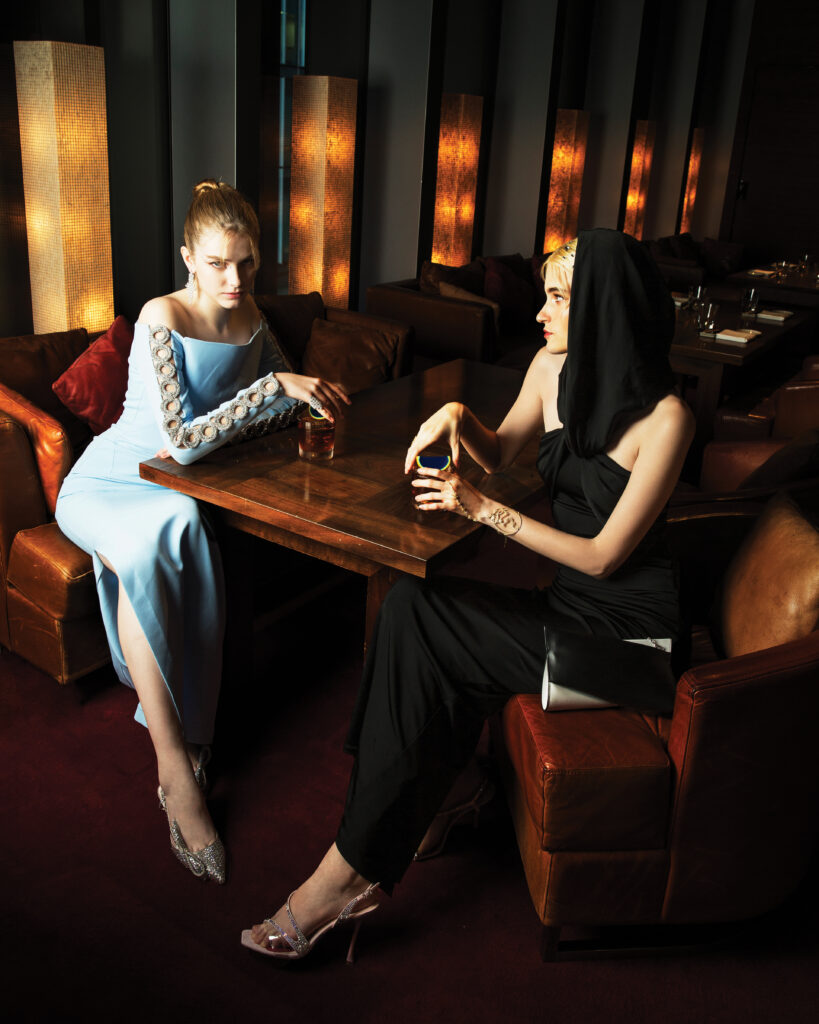
On Her (Left)
Earrings and ring by APM Monaco
Maimee off-the-shoulder crystal-embellished stretch-crepe gown by Safiyaa, courtesy of NET-A-PORTER
Heels by Roger Vivier
On Her (Right)
Hand jewellery by APM Monaco
Olive cape-effect twist-front stretch-jersey gown by Et Ochs., courtesy of NET-A-PORTER
Clutch by Christian Louboutin Heels by Roger Vivier
Look 2
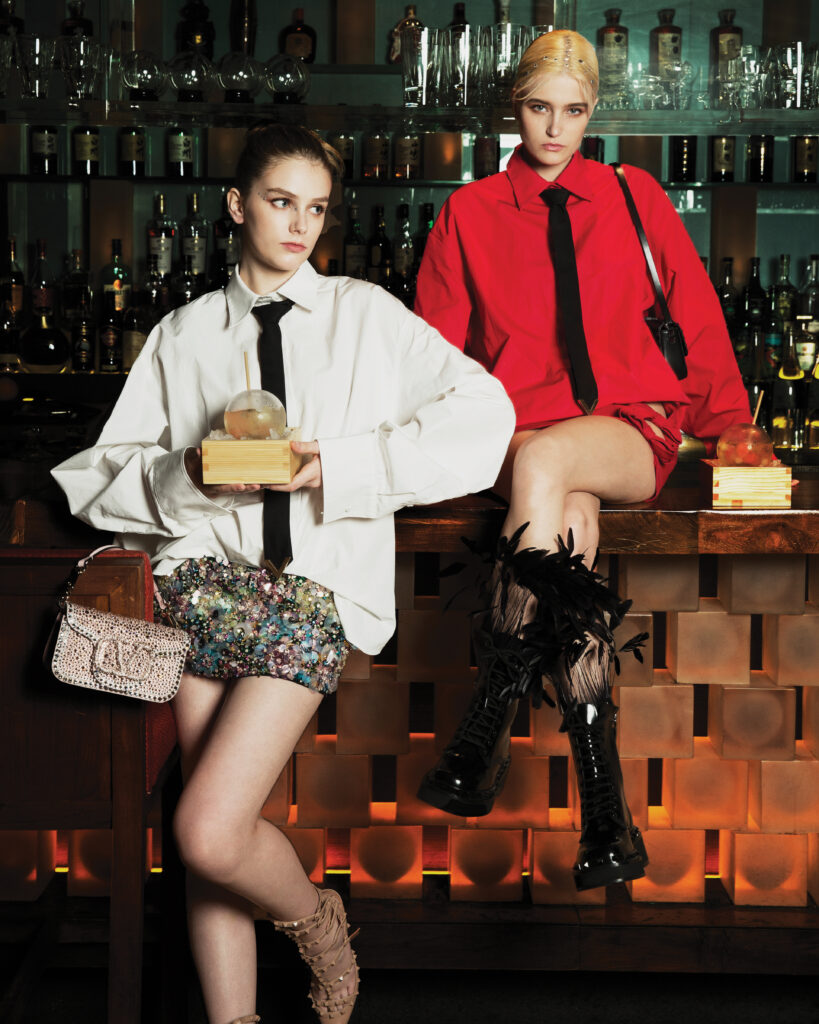
On Her (Left)
Shirt, tie, skirt, handbag and heels by Valentino
On Her (Right)
Shirt, tie, skirt, handbag and heels by Valentino
Look 3
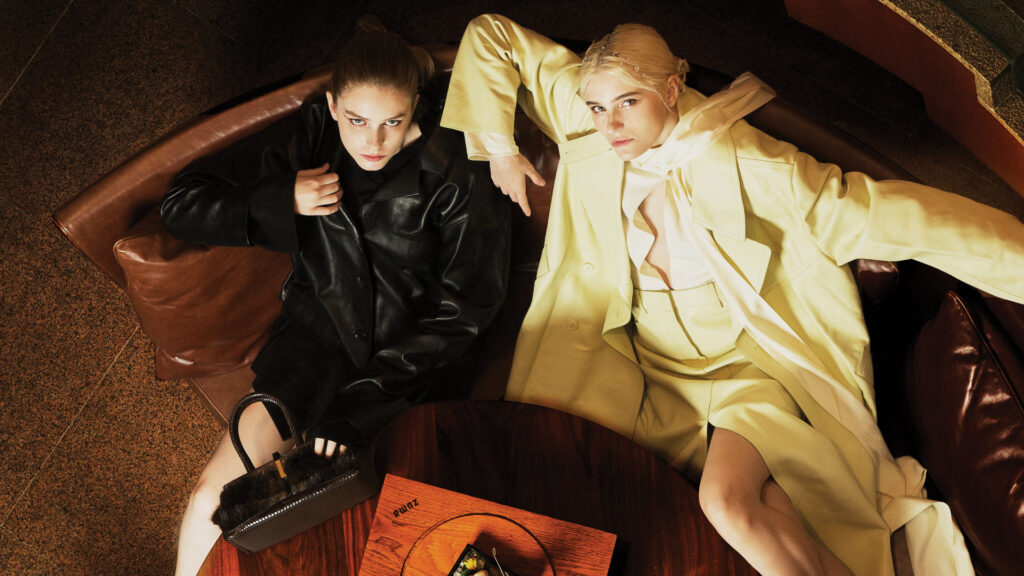
On Her (Left)
Jacket, shirt, handbag and heels by Givenchy
On Her (Right)
Long coat, top, pants and heels by Givenchy
Look 4
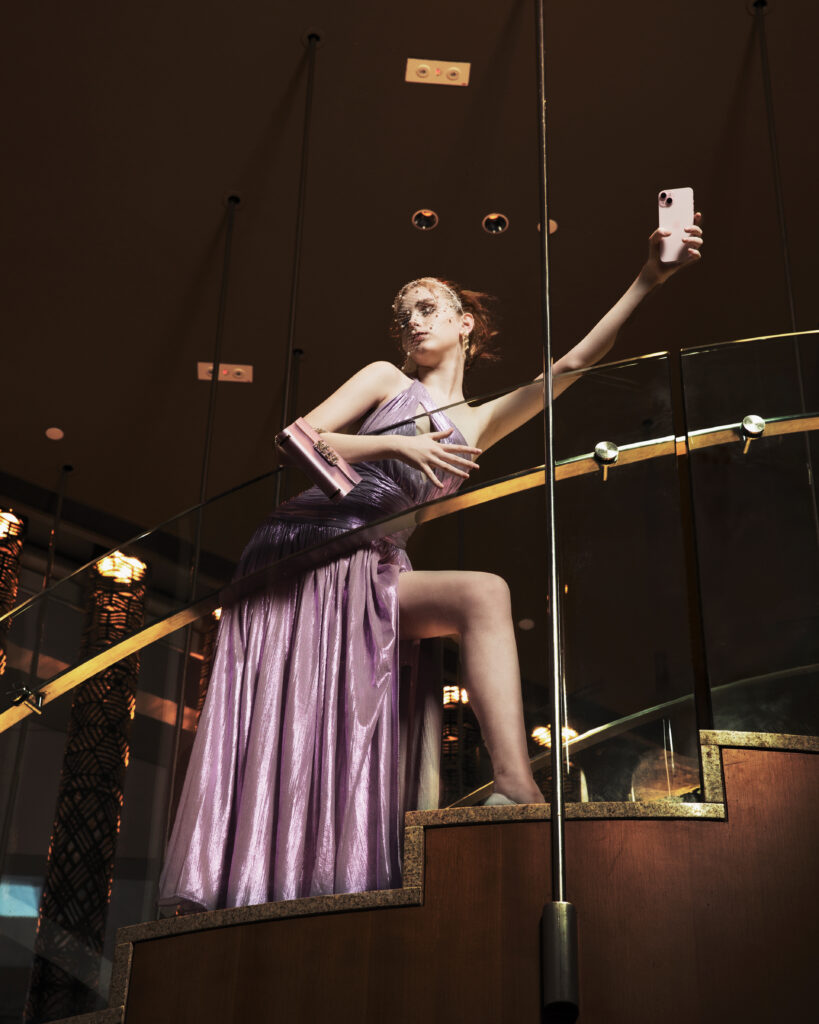
iPhone 15 Plus in Pink by Apple
Voilette headband (Jennifer Behr) available at Lane Crawford
Earrings by APM Monaco
Dara one-shoulder cutout plissé-lamé maxi dress by Retrofête, courtesy of NET-A-PORTER
Handbag by Roger Vivier
Heels by Christian Louboutin
Look 5
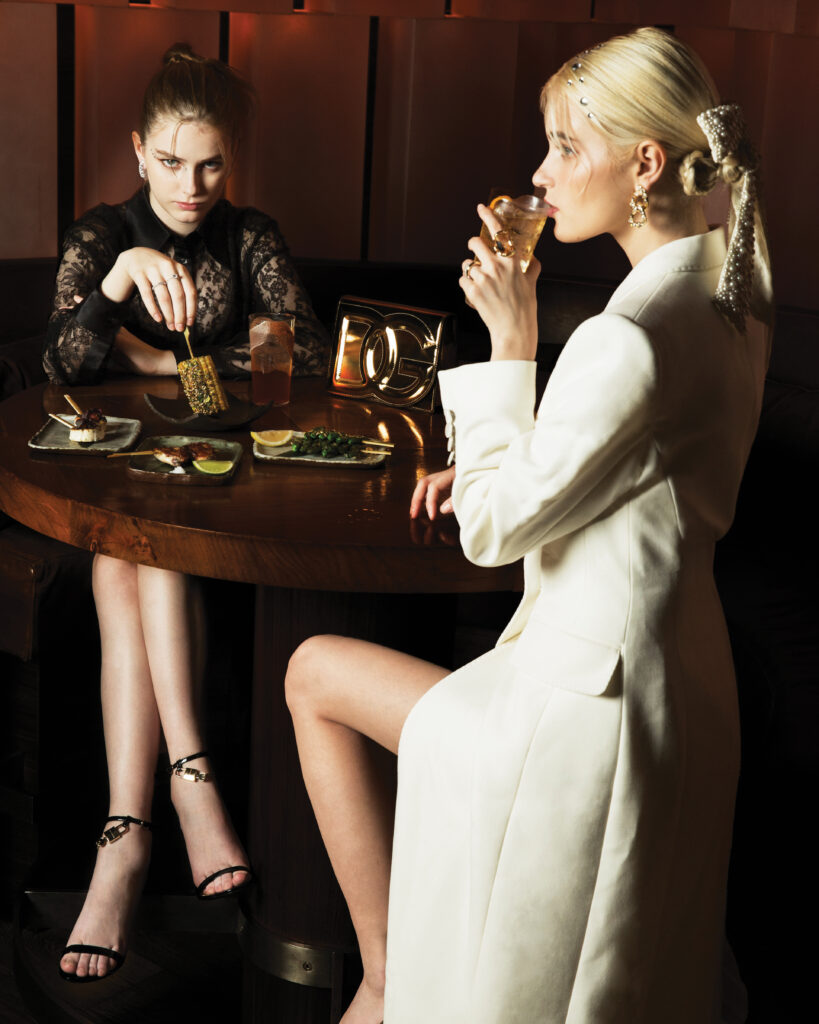
On Her (Left)
Earrings and rings by Swarovski Shirt
skirt, clutch and heels by Dolce & Gabbana
On Her (Right)
Earrings and rings by Swarovski
Bailey oversized bow barrette (Jennifer Behr) available at Lane Crawford
Trench coat and heels by Dolce & Gabbana
Look 6
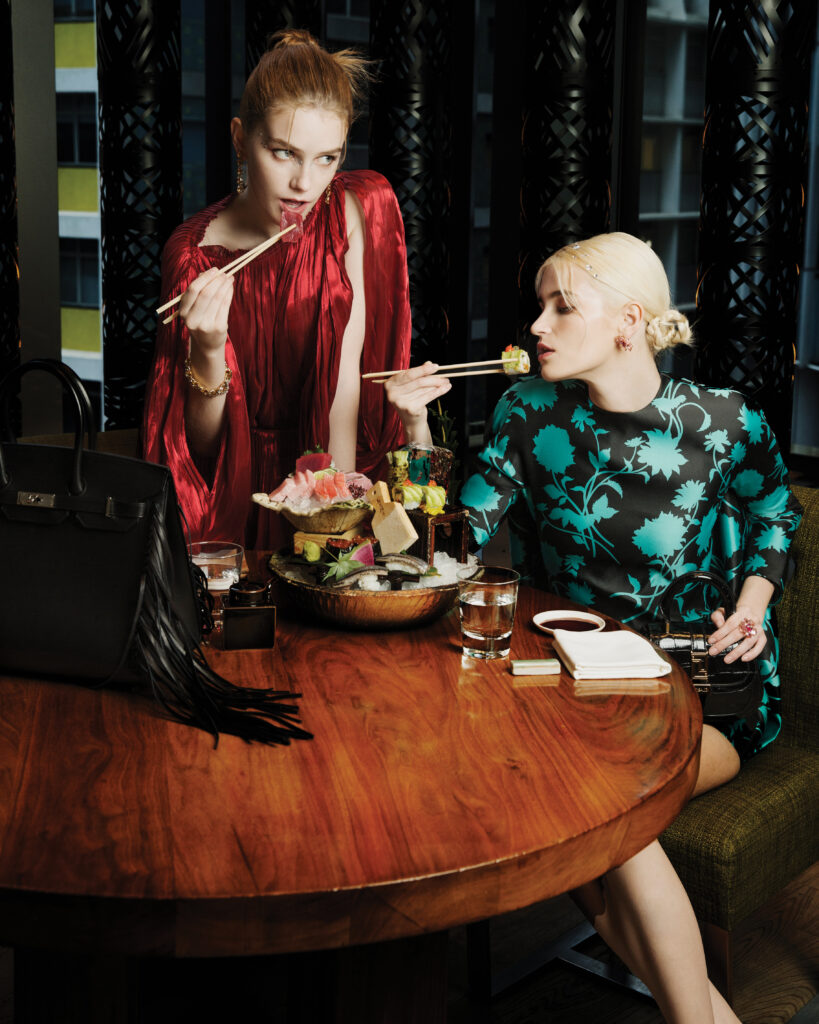
On Her (Left)
Earrings and bracelet by Swarovski
Dress and handbag by Hermés
On Her (Right)
Earring and bracelet by Swarovski
Dress and handbag by Versace
Look 7
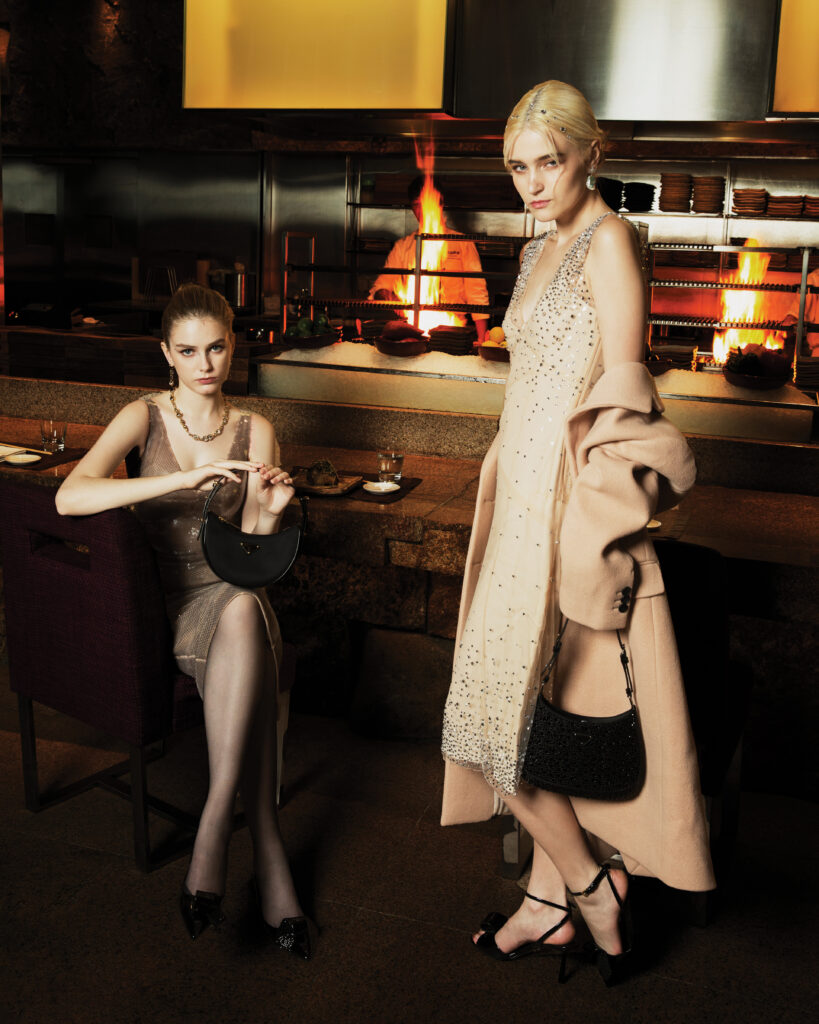
On Her (Left)
Earrings and necklace by Swarovski
Dress, leggings, handbag and heels by Prada
On Her (Right)
Earrings by APM Monaco Trench coat, dress, handbag and heels by Prada
Look 8
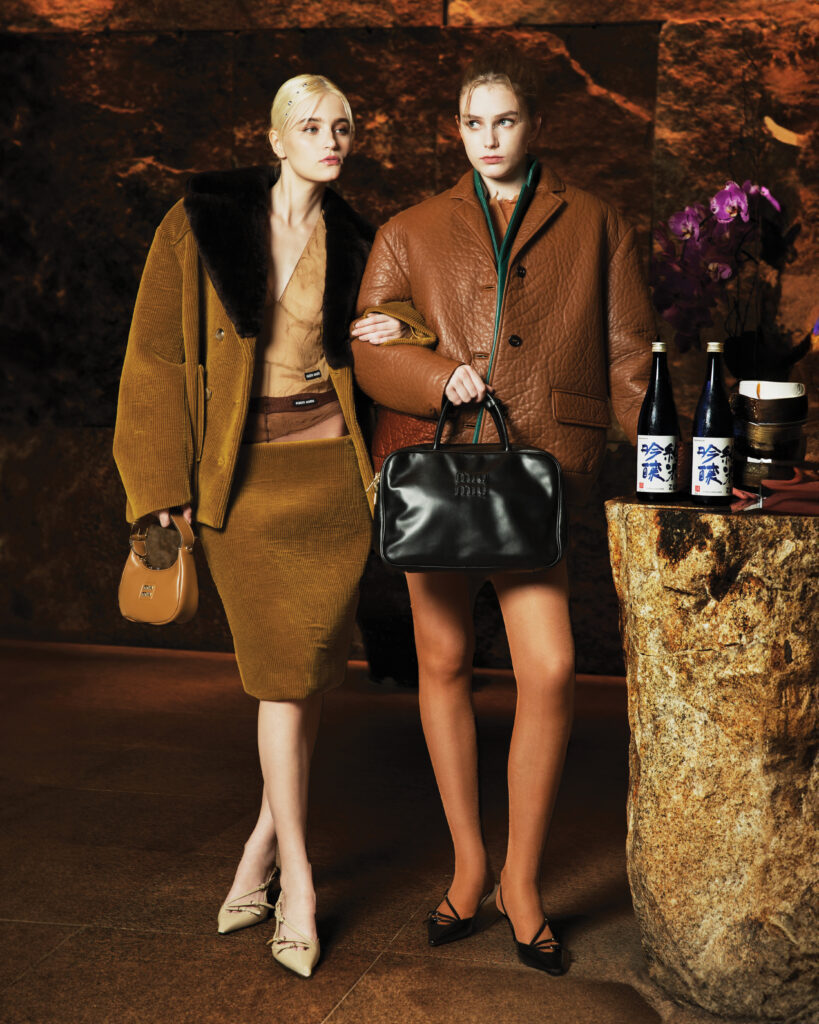
On Her (Left)
Jacket, undergarments, handbag, skirt and heels by Miu Miu
On Her (Right)
Jacket, handbag, undergarments and leggings by Miu Miu
Look 9
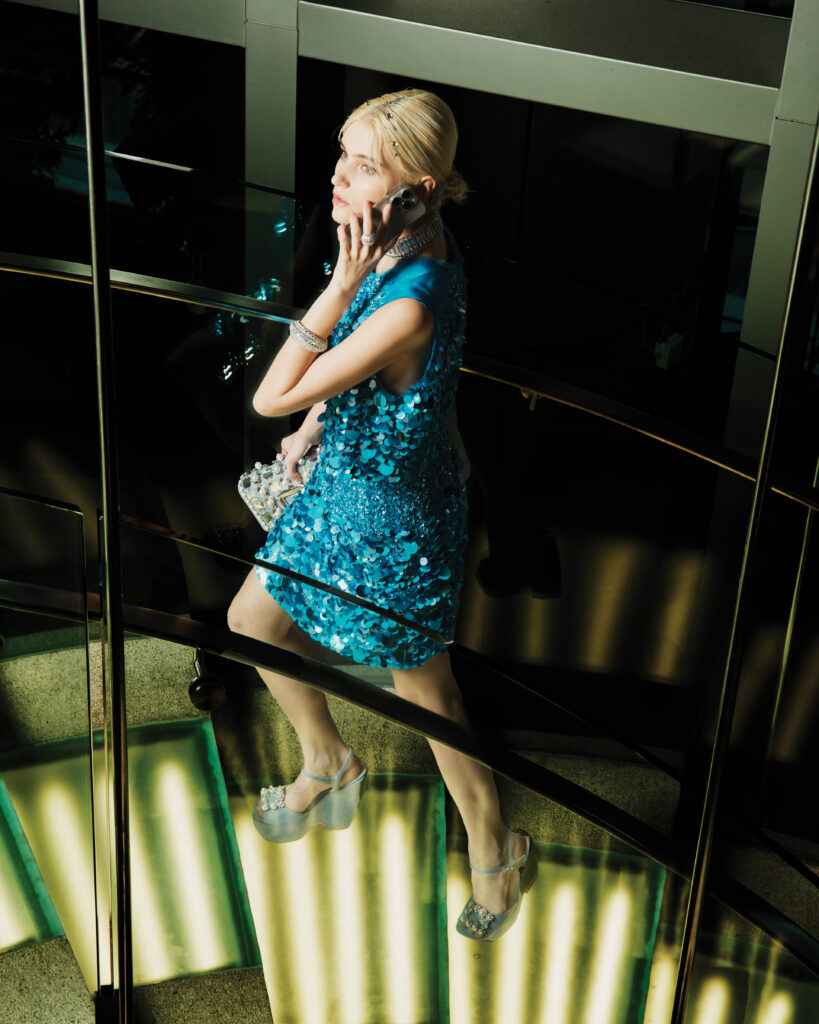
iPhone 15 Pro in Natural Titanium by Apple Necklace, ring and bracelet by Swarovski
Celeste cropped sequined mesh top by AJE, courtesy of NET-A-PORTER
Cherie sequined mesh mini skirt by AJE, courtesy of NET-A-PORTER
Clutch and heels by Roger Vivier
Photographer: Jack Law Art Direction & Styling: Jhoshwa Ledesma Videographer: Jack Fontanilla
Models: Shauri (Synergy Model Management Ltd.) & Sofia (Synergy Model Management Ltd.)
Hair and Make-up: Heti Tsang & Owen Ko Venue: ZUMA Hong Kong
What’s on? Things to do this November in Hong Kong
Mark your calendars and see the amazing swim across Victoria Harbour or views flicks at the film festivals or absorb cultural offerings at museums, music festivals and dance performances this November.
New World Harbour Race
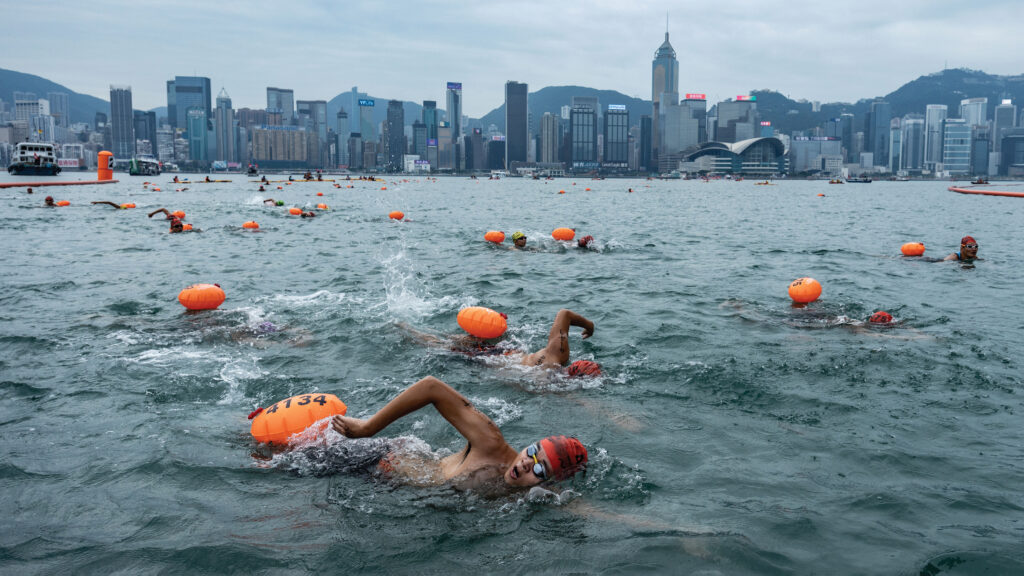
Against the superb and unforgettable backdrop of the Hong Kong skyline, this challenging swim allows competitors to test their mettle in the waters of Victoria Harbour. The cross-harbour race, which traces its roots back to 1906, is always a popular draw and welcomes thousands of avid participants from across the world. Swimmers on the day will commence from the Bauhinia Square Public Pier in Wan Chai and finish at the Avenue of Stars, Tsim Sha Tsui. The quota for entrants this year has increased to 4,000 and there will be an elite International Race as well as hardy swimmers from across the Greater Bay Area taking the plunge.
When: 12 November
Where: Victoria Harbour
How much: Free
Muse Fest HK 2023
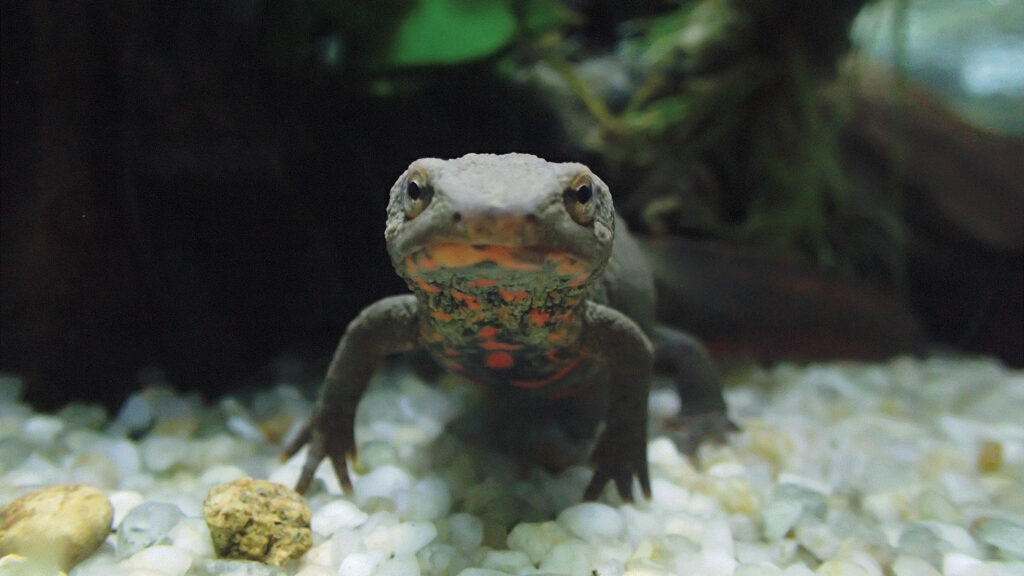
Explore the cultural delights on offer across various venues in the city’s history, art and science museums under the theme ‘Hong Kong H.A.S. Museums. All month there are multifarious events designed to broaden your horizons and understanding of mind-blowing subjects such as the wonders of science fiction as portrayed at an exhibition staged by the Hong Kong Science Museum. A two-day carnival entitled ‘A Fiesta of Imagination’ is a highlight. This is just one of a superb series of events and programmes across many venues which allow visitors to absorb knowledge and soak up culture.
When: 1-30 November
Where: Various venues
How much: Free
For more information: museums.gov.hk
The Great Gatsby
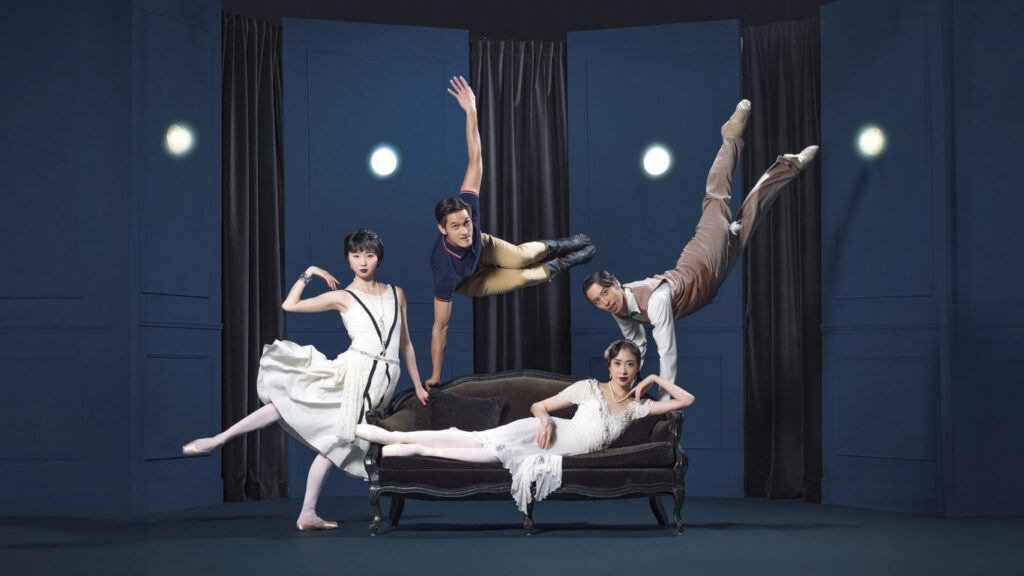
Hong Kong Ballet Artistic Director Septime Webre captures the essence of F. Scott Fitzgerald’s classic novel, The Great Gatsby, in a wonderful portrayal of life lived to excess in opulent 1920s America – a tale of never-ending parties, unbridled greed and obsessive desires simmering not far from the surface in high-society New York. Performed against the backdrop of a steamy jazz-infused soundtrack and art deco sets by Tim Yip, dancers along with vocalist E. Faye Butler and narrator James Seol capture the spirit of the age.
When: 4-5 November
Where: Grand Theatre, Hong Kong Cultural Centre
How much: From $220
Jewish Film Festival
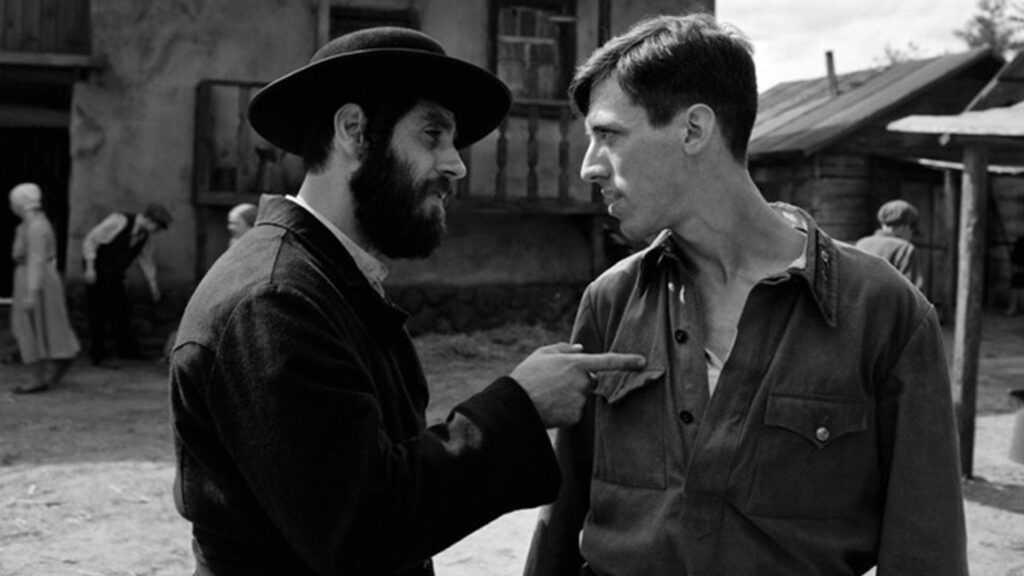
Asia’s flagship Jewish festival has gone from strength to strength and now offers a magnificently diverse range of films showcasing Jewish life. The number of filmmakers keen for their work celebrating the Jewish tradition to be showcased in Hong Kong has grown, with 21 features, documentaries and short films able to be enjoyed.
When: 11-19 November
Where: Golden Scene Cinema, Kennedy Town
How much: From $110 per film; all access pass HK$1,800
For more information: hkjff.org
Asian Film Festival

Watch some of the finest films Asia has to offer at various cinemas throughout Hong Kong. Almost 100 films will be aired during the festival, which has gained international recognition for the quality and breadth of its programme. In addition to locally produced features, regional selections from the far and near will be screened. Masterclasses and workshops will be staged by renowned filmmakers such as Shunji Iwai and Koji Yakusho, while eight directors including Taiwan’s Lee Hong- chi vie for the New Talent Award.
When: Until 17 November
Where: Various venues
How much: From $95
For more information: hkaff.asia
Pop Culture Festival

Hong Kong certainly has its own distinctive pop culture and a whole raft of acts will be performing throughout a festival that urges us to ‘Let’s Pop’. There will also be outdoor activities, thematic exhibitions and film screenings to bring back memories and conjure up masterpieces from Hong Kong’s golden era of Cantopop in the ’80s and ’90s. The festival highlights the progress over the years of local pop music, its creativity and its character.
When: Until 18 November
Where: Various venues
How much: Various prices
For more information: pcf.gov.hk
Killing TV
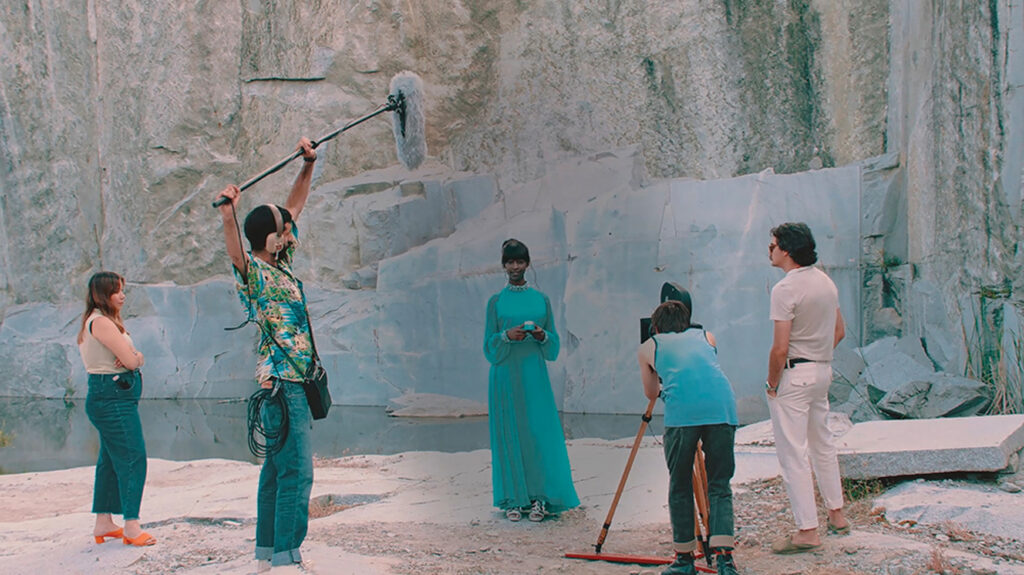
Interaction between art and television is the concept behind Killing TV, as 15 contemporary artists from a mix of backgrounds contribute to an exhibition that explores the cultural, psychological and social impact of the boob tube. A range of videos including performance art and sculptural installations as well as TV shows and commercials will excite the senses and stimulate memories from the past, present and the future while addressing television’s pervasive power since the 1970s.
When: Until 19 November
Where: Tai Kwun
How much: Free
For more information: taikwun.hk
Night Vibes Hong Kong @ Museums

As efforts to support the ‘Night Vibes Hong Kong’ campaign gather momentum, Hong Kong museums are offering special programmes to bolster evenings out around town. The Hong Kong Museum of Art presents a range of exhibitions and screens a romantic local film.
When: Until 26 November
Where: Hong Kong Museum of Arts, Hong Kong Science Museum and Hong Kong Space Museum
How much: Various prices
For more information: lcsd.gov.hk
Great Music 2023
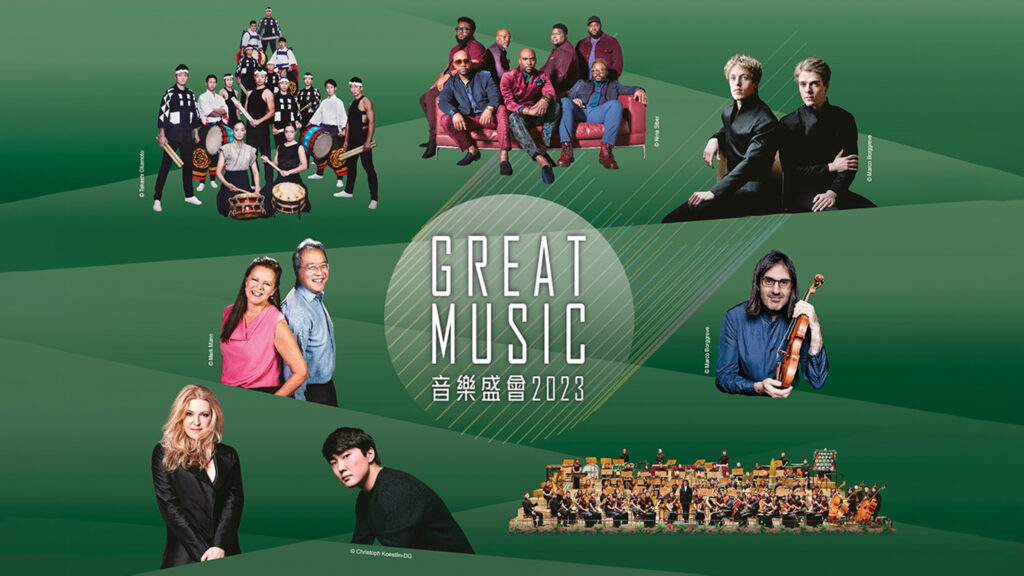
Winding down this month is a series of concerts under the Great Music 2023 umbrella that has seen musicians from around the world gather in Hong Kong to perform a plethora of programmes catering to a wide variety of tastes. The eclectic musical mix concludes with some superb piano-centric performances. Cellist Yo-Yo Ma and pianist Kathryn Stott team up once again, youthful South Korean talent Seong-Jin Cho hits the keys during a stirring recital, and veteran Brazilian jazz artist Eliane Elias lets rip.
When: Until 28 November
Where: Various venues
How much: Various prices
For more information: lcsd.gov.hk
Dream Reality: The TV show may have ended, but Deborah Valdez-Hung’s glitzy world is only getting bigger
Standing in the airy foyer of her Residence Bel-Air home, Deborah Valdez-Hung looks exactly like she does in the Netflix reality show Bling Empire: New York – better, actually. With her signature configuration of bronzer, highlighter, contouring, full red lips and skin-tight designer garb, the media star is a natural standout from the handful of staff in the room, or in any room, in fact. Surprisingly, she is softer and daintier in three dimensions than she is in two. If anything is true of Valdez-Hung, it is her endless talent for optical illusions and posing for the camera.
“Let’s get straight right into it?” she asks jokingly. “Welcome. Come right in. Feel free to roam around the house and see which location we should work on for the photos. Everything here is inspired by surrealism and avant-garde.”
She leads the way to a living room containing all things maximalist, from the blue dangling light fixtures to the red velvet walls and unconventionally heart-shaped couches. All these reflect the passionate nature the jetsetter has carried from her humble beginnings in the Mexican desert to the international cities and countries she now calls home from time to time.
Model mission
A former model herself, Valdez-Hung is the owner and chairperson of Dreamodels, one of the city’s and Asia’s premium full-service modelling agencies. She is also somewhat of an influencer, given her high position and glamorous, fast-paced lifestyle that whisks her to fashion shows and other events across the globe. It appears from her Instagram, which has 772,000 followers to date, that she is still modelling and rarely short of a prominent party or exotic location to pose at.
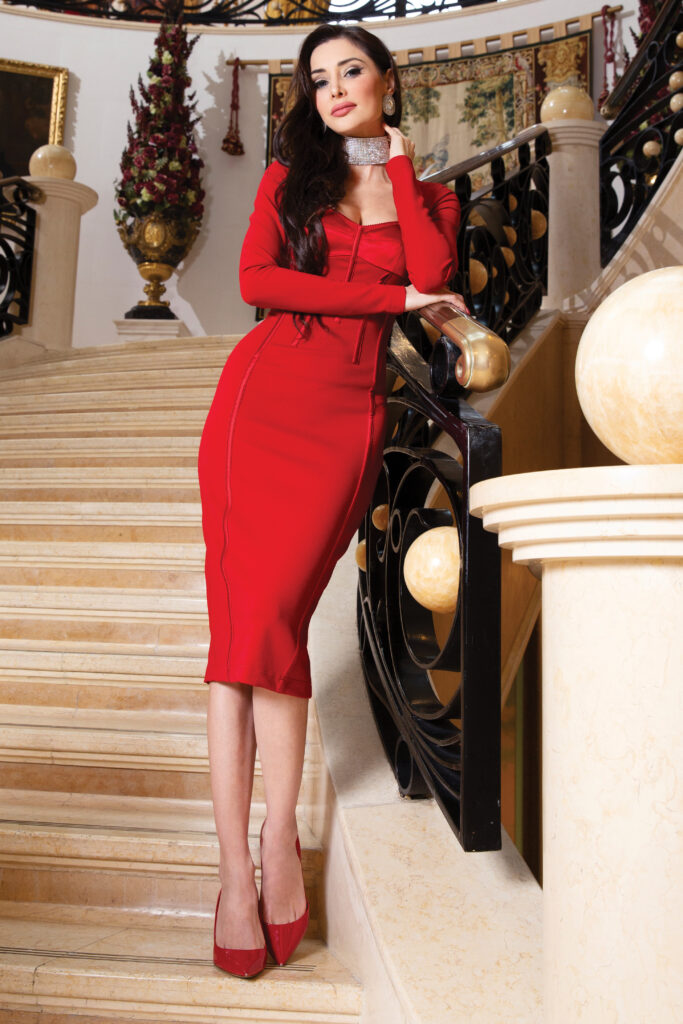
“I have been interested in fashion since I was young,” she shares while adding another row of bling around her neck. “I did not go to a fashion or design school, but my friends have a fondness for fashion, and from there, I learned about the construction of clothing. However, my interests were beyond that, to be completely honest. That’s why I decided to become a model. It is a very competitive industry and everything changes very fast. You have to be creative and daring.”
Food for thought
An employee offers a bottle of Coca-Cola in addition to the already massive spread of branded cookies and fresh fruits prepared for the day. One cannot help but wonder, is this a way to counter the famous scene in the pilot episode of Bling Empire: New York where she was accused of not serving any food? Maybe. Or maybe not. She confesses that she just enjoys food and snacking in general, contrary to what the majority of people might think of models’ dietary habits.
Laughing while munching on lychees, she says, nonchalance personified: “I knew this would be brought up. But yes, oh my gosh! I love snacking, especially at midnight.”
She’s svelte and looks fresher and more vulnerable than she does. From the word go, Deborah is unflinchingly honest and not afraid to tackle the heavy stuff. On the other hand, her beauty is both striking and earthy.

“Modelling was also an opportunity for me to travel the world. As a kid, and up to now, I am always amazed on how rich culture can be of a certain country. The modeling stint was offered to me, and looking back, I think it would be silly of me to pass on such great opportunity.”
Denting momentarily her ultra-glam image, she admits to preferring flats and sneakers to high heels especially since she is always on the go. Despite this assertion, her landscape is one populated by diamonds, private jets and rose bouquets larger than many studio apartments here. It’s a cross-platform, finely tuned optics juggernaut that requires constant maintenance and, she insists justifiably, a lot of work.
Legal aim
Before the Hong Kong socialite lifestyle and the reality TV fame, Valdez was a practising civil lawyer in Mexico and Europe.
“I decided to be a lawyer as I wanted to help people and to have a bigger purpose in life,” she shares. “But I was also heavily influenced by my father who also has a background in law. Growing up, I was always fascinated listening to his stories and work experiences.”

And in all business situations, her legal training and background is helpful. She launched Dreamodels in 2012, the same year of her marriage to wealthy and flamboyant Hong Kong businessman Stephen Hung, whom she also teasingly dubs as her number-one fan and social media manager.
“Is this pose okay? Try taking it from a top view,” she instructs of her husband who is snapping behind-the-scenes photos of our shoot to post on her Instagram account. “Humour and laughter are parts of our culture in Mexico. I think that’s what makes us unique.”
Animal magnetism
Other cherished members of the household are not to be left out.
“Chiquita! Tan Hermosa!” she coos in her most loving Mexican-Spanish lilt as her dogs scamper over to join her for a photo.
There’s no question that her grueling upkeep routine is working. On the topic of animals, whose rights she strongly advocates, she becomes emphatic. She is a fur mum to two Chihuahuas who own a bedroom and a closet of their own, and she enjoys playing dress up and matching Chanel outfits with them.

“If I have all the means and energy, something I would be ecstatic about doing every day for the rest of my life is to free animals from cages, zoos and labs. I would like to volunteer and dedicate my time in helping a few animal protection associations. Or maybe I’m being too ambitious? I don’t know. But I think as humans, we should value and respect animals’ lives. At the end of the day, we are all God’s creations cohabitating on this planet,” she says fervently.
Back in her early days in Mexico, the millennial reality TV star was raised in a Christian family’s household.
Passion project
As to the legacy she wants to leave, she is starting a company specialising in accessories and faux-fur coats. “I am giving all my love to my family, friends and pets with this project. They are more than my inspirations in doing all of these things. They are my motivators too,” she says. “Passion and fashion will always be part of my DNA.”
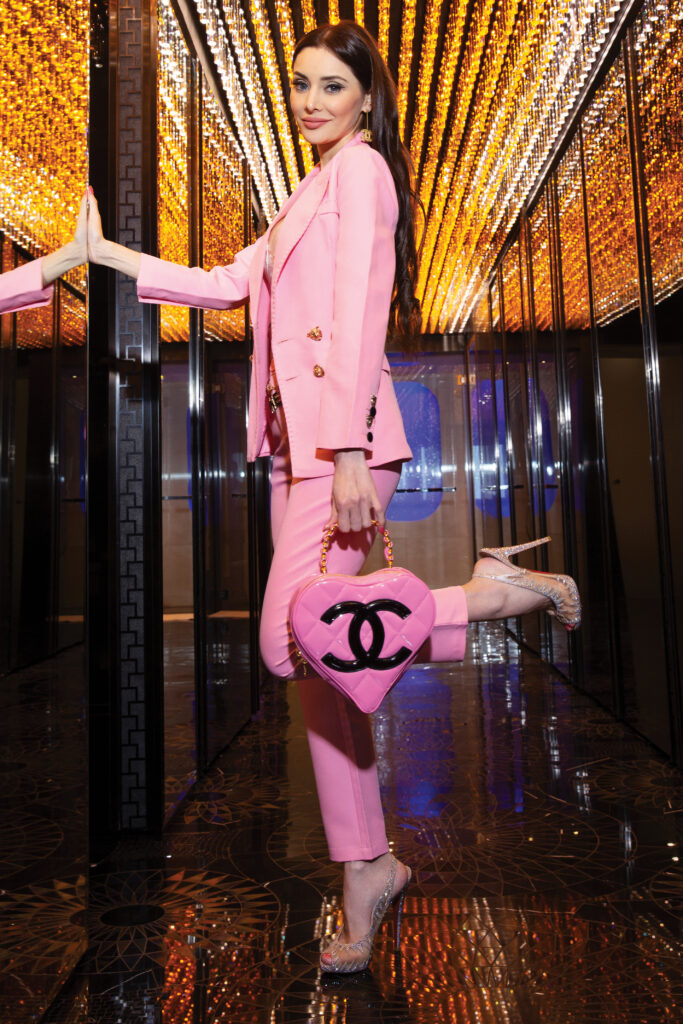
In addition to being a person of influence, Valdez-Hung is without a doubt an “it”: a vector of debate, a media property, a mover of markets, an engine of consumer behaviour, a symbol, a brand, a cipher. As she sits at her home office table discussing work, food, dogs and life, she embodies the glamorous woman her fans aspire to.
Her husband suggests she does one more pose with her dazzling pink Rolls-Royce and is denied: “Pass. That’s been done to death.” Job done, she gets up without a murmur and, like the 6 pm sun slipping below the horizon, quietly exits the frame.
Interview & Art Direction: Joseff Musa Photographer: Jack Law Videographer: Jack Fontanilla Fashion Stylist: Jhoshwa Ledesma



